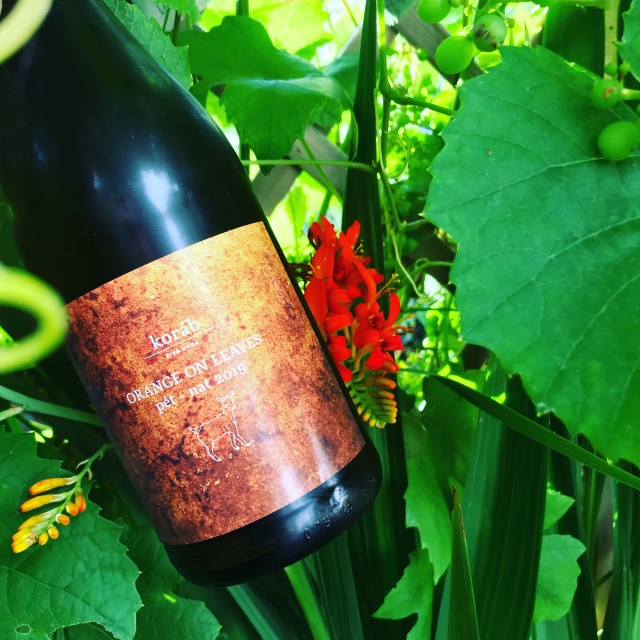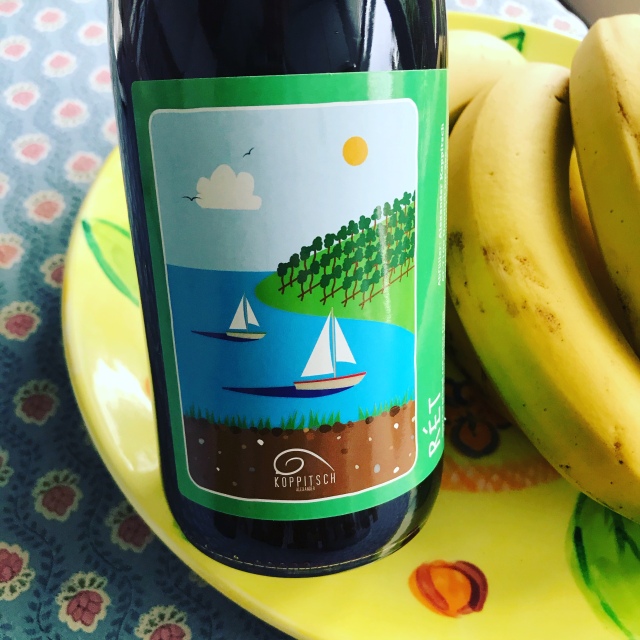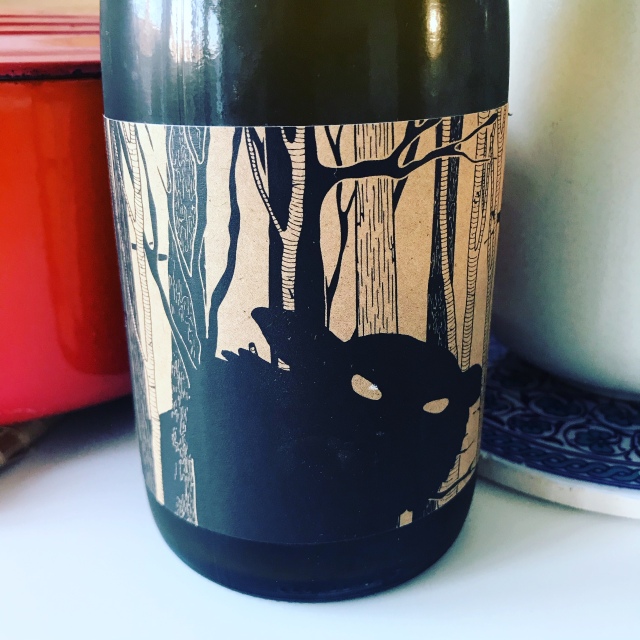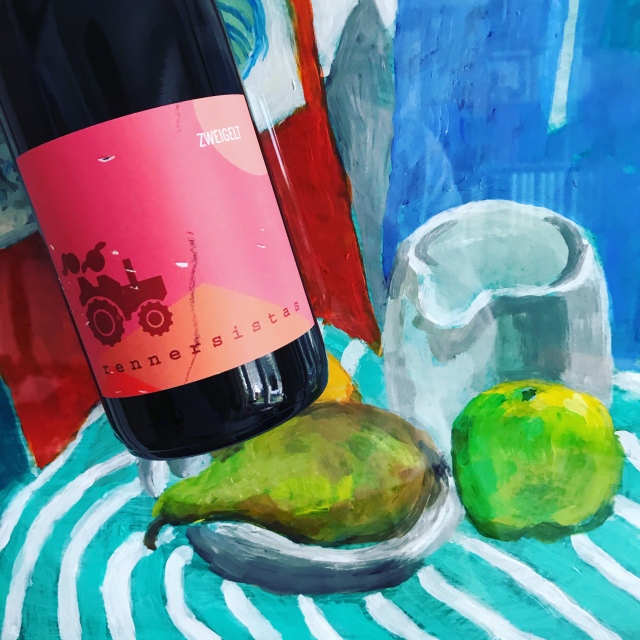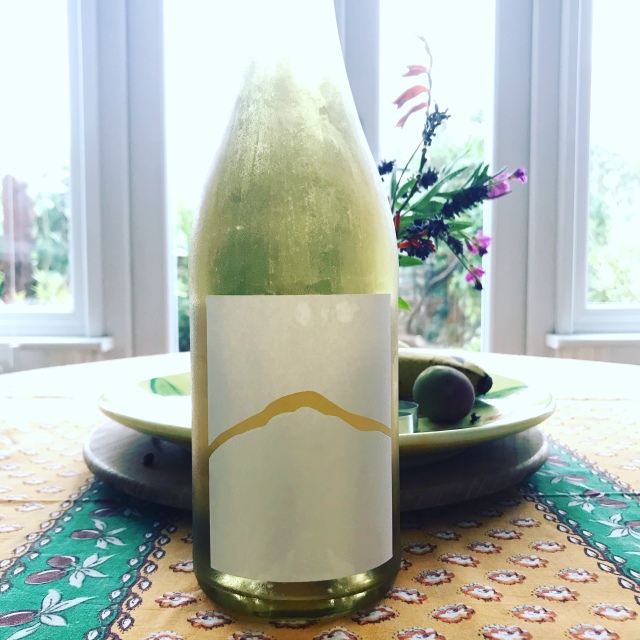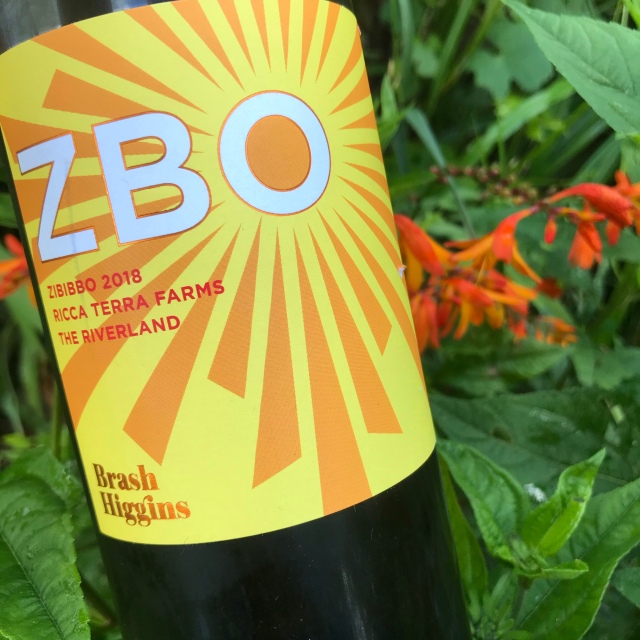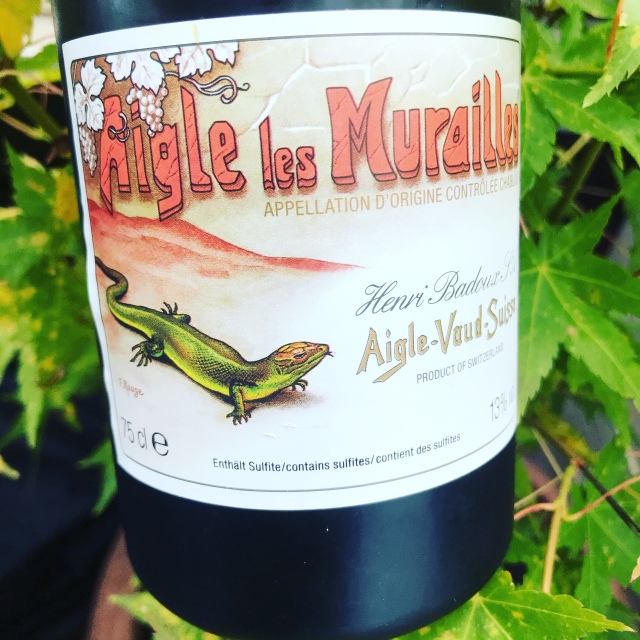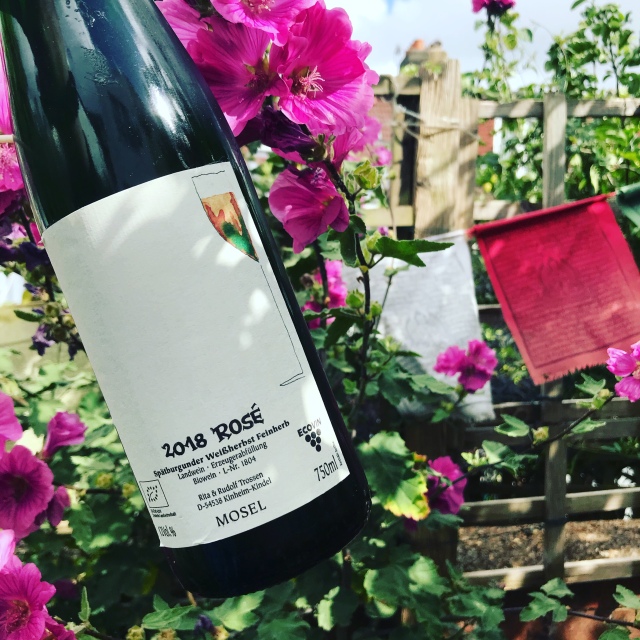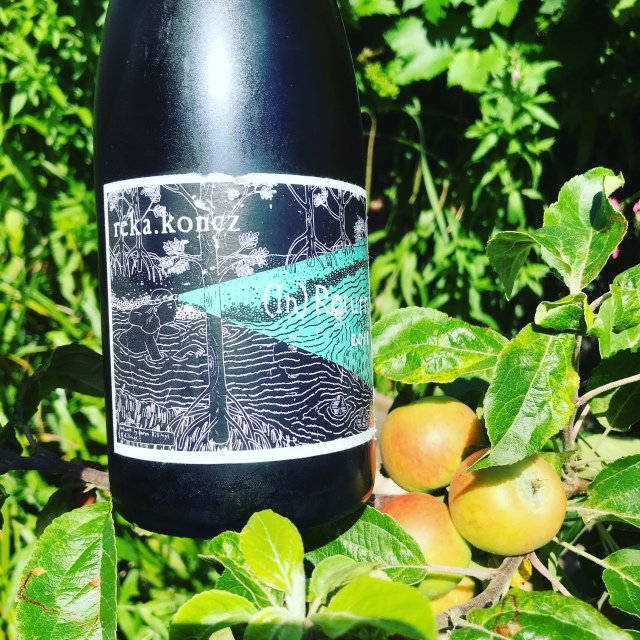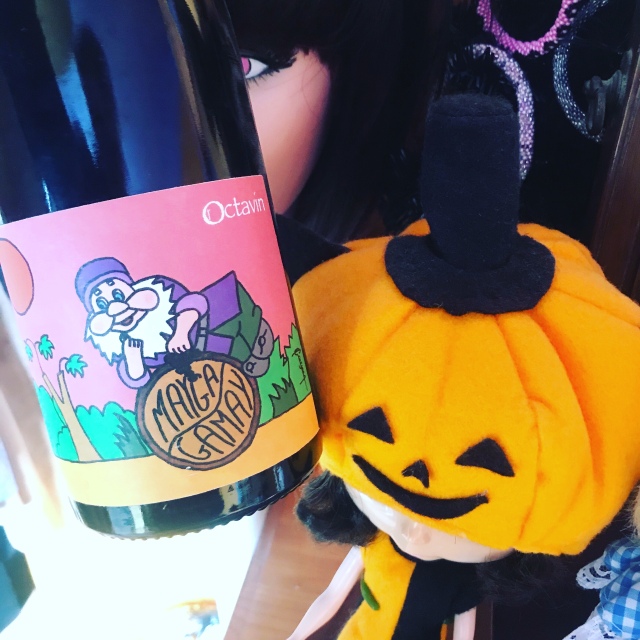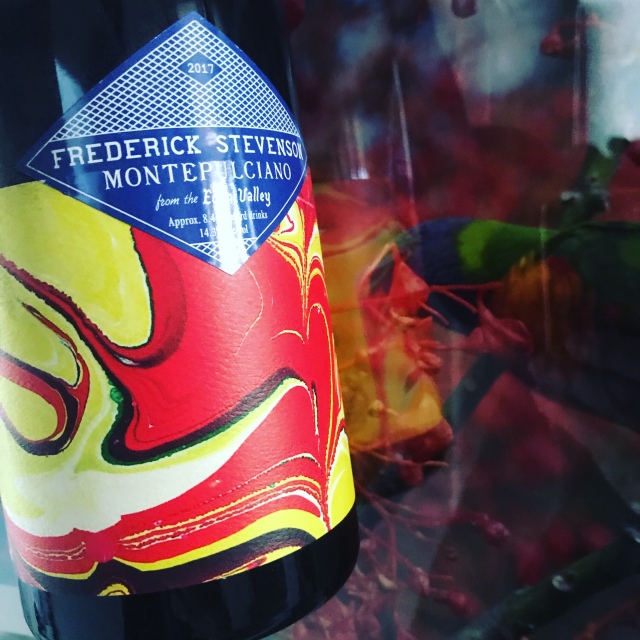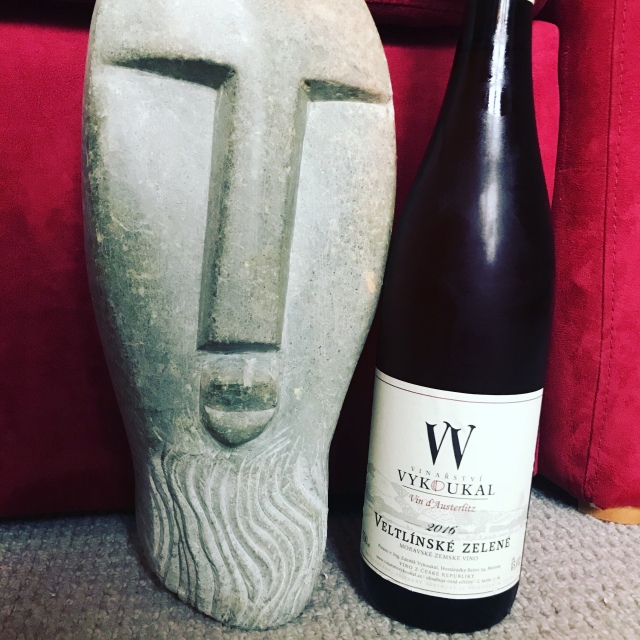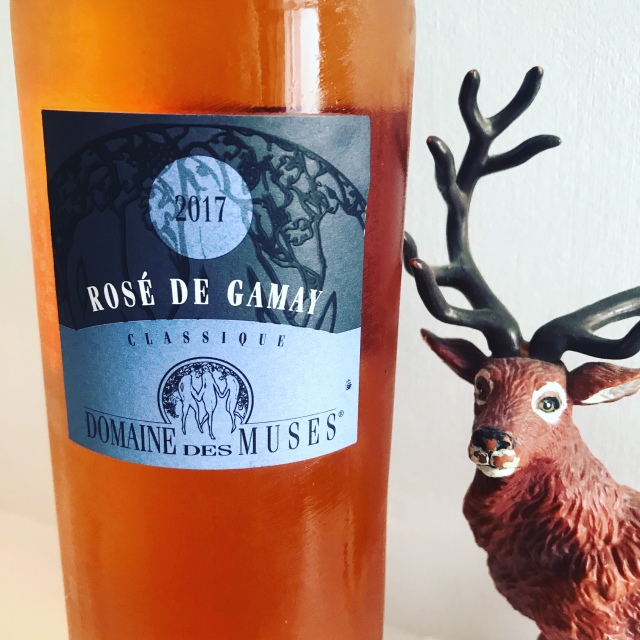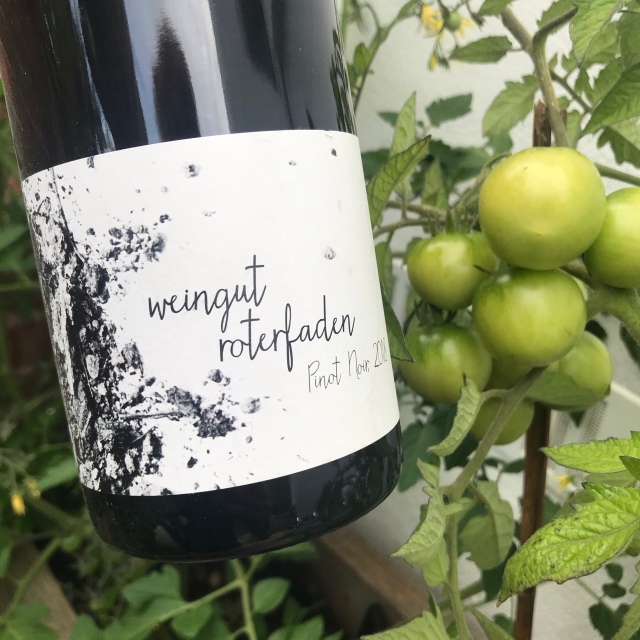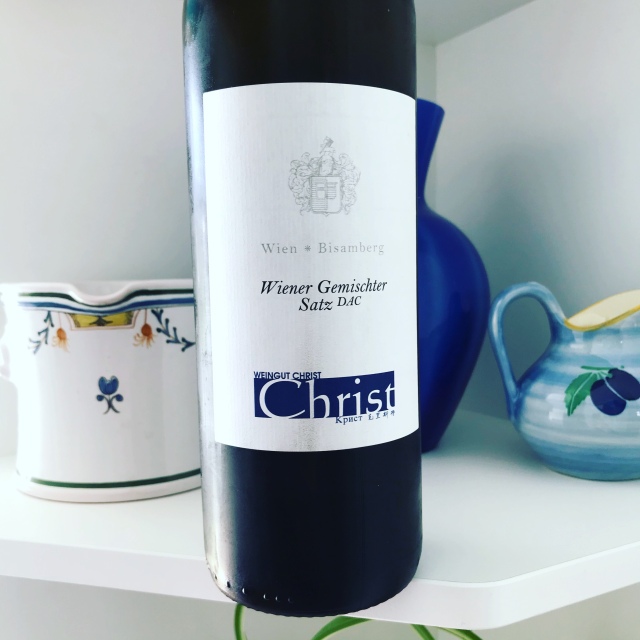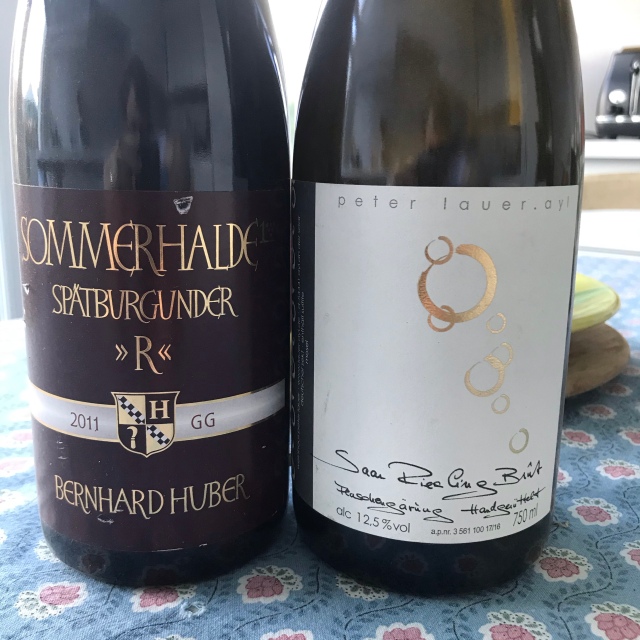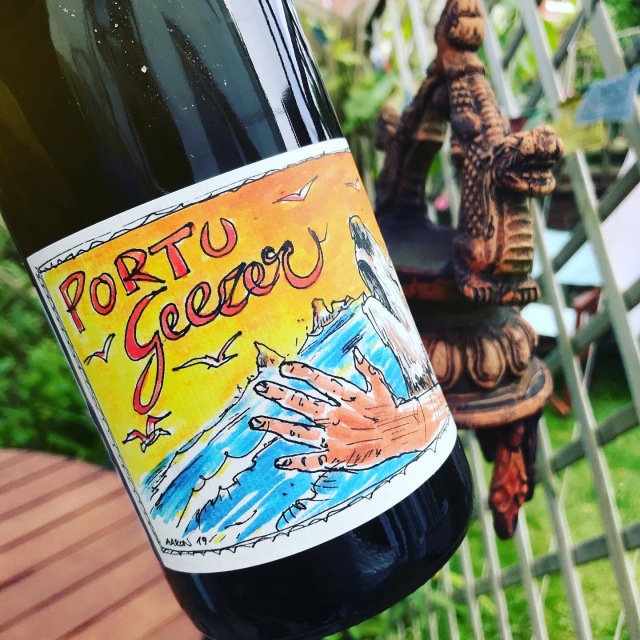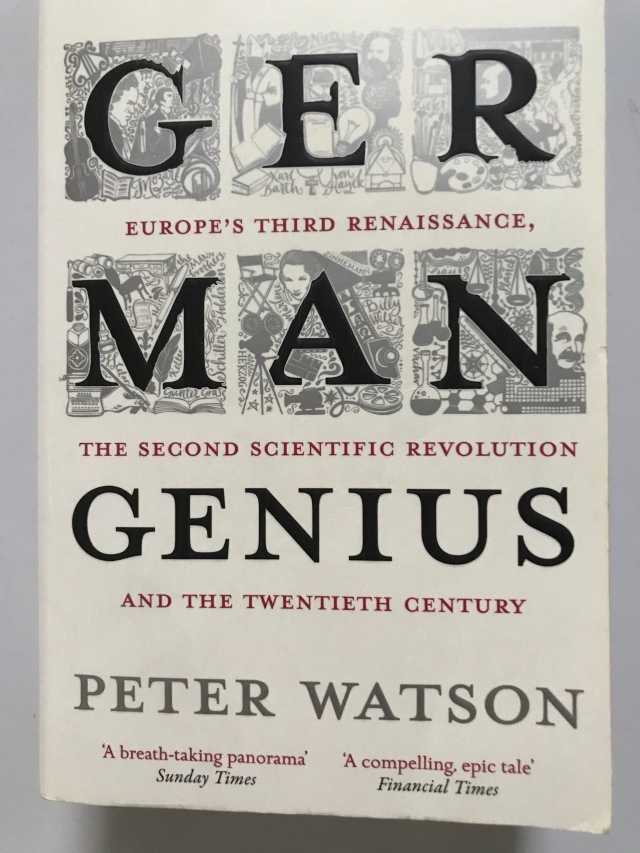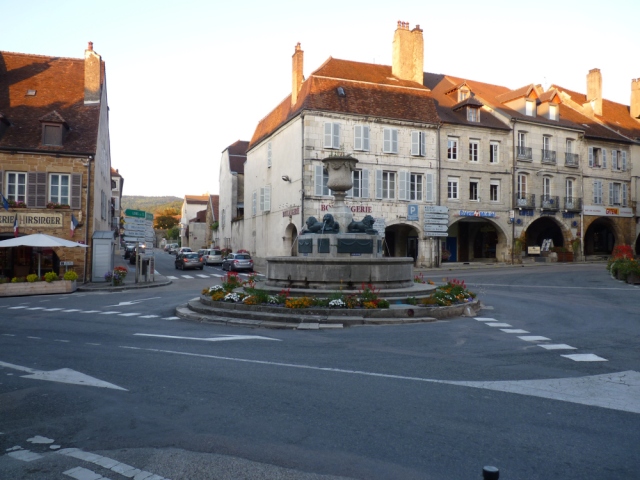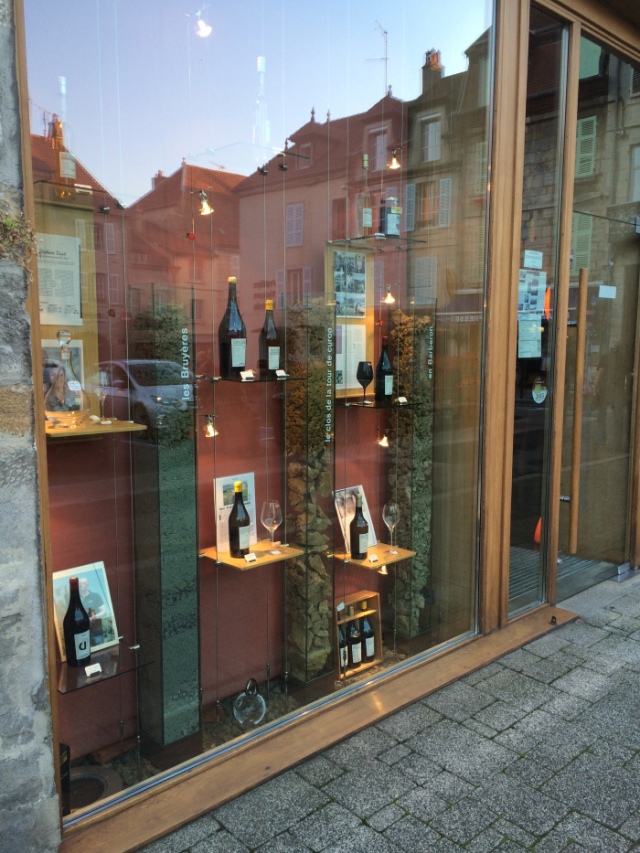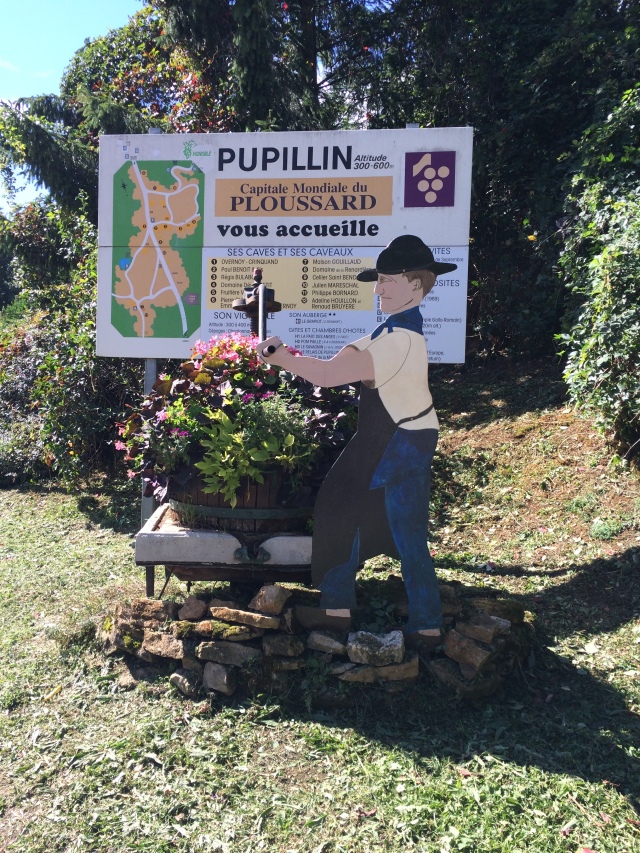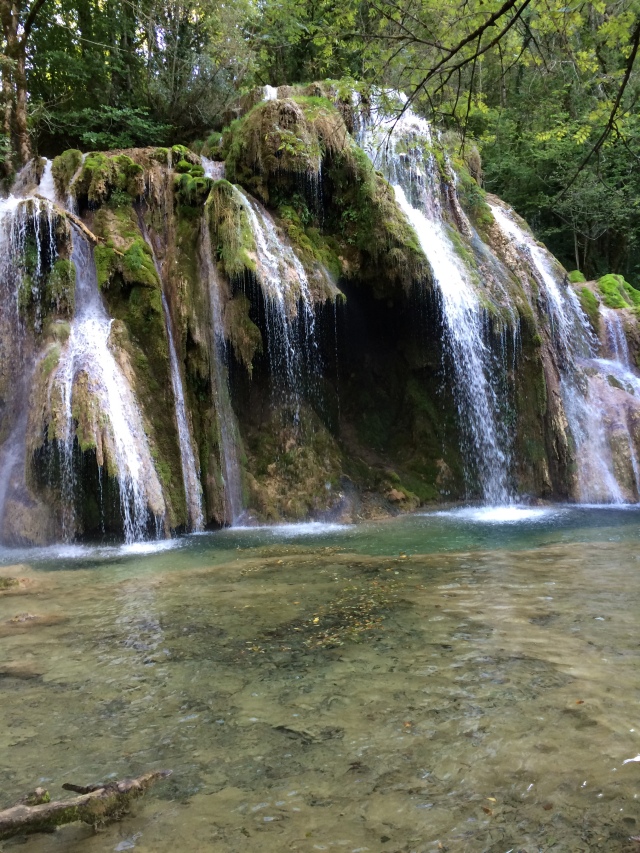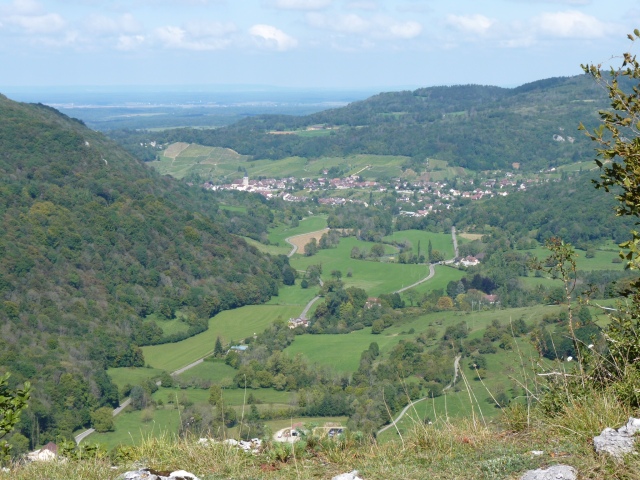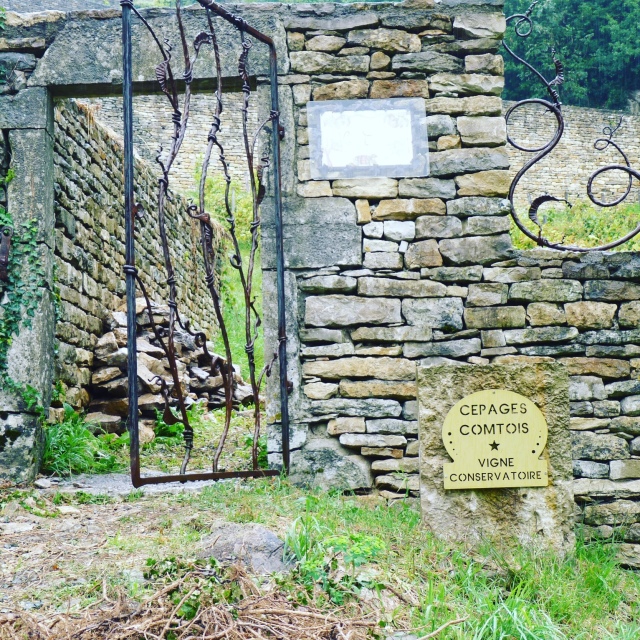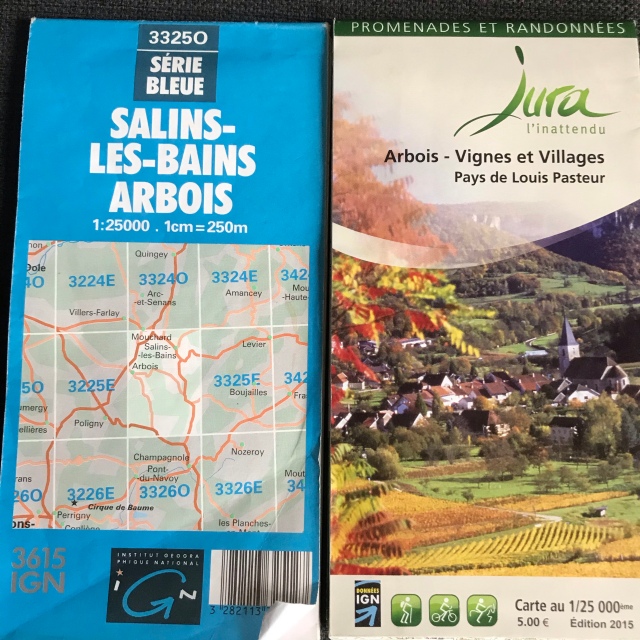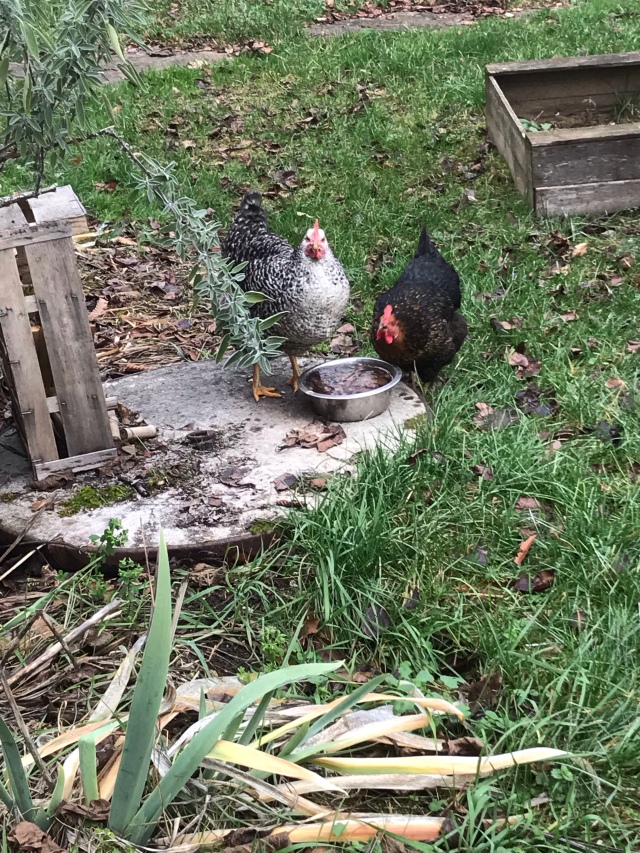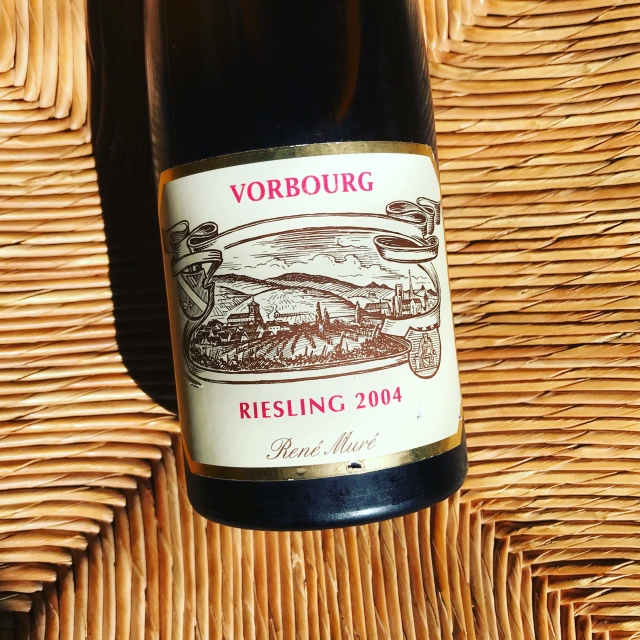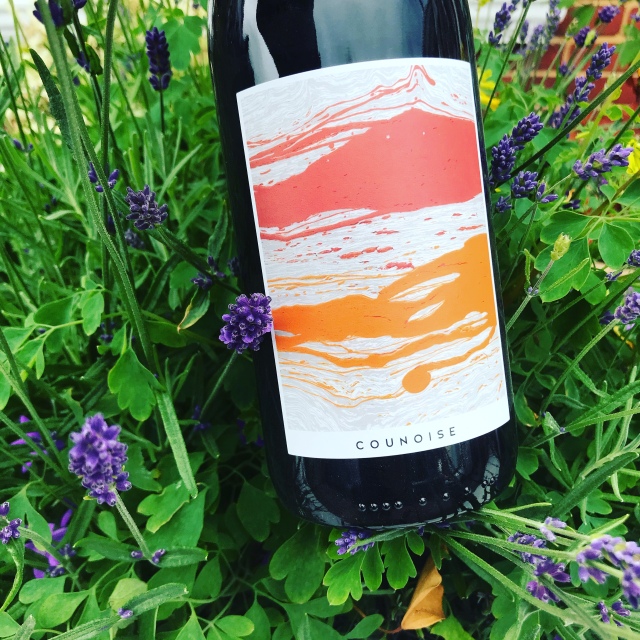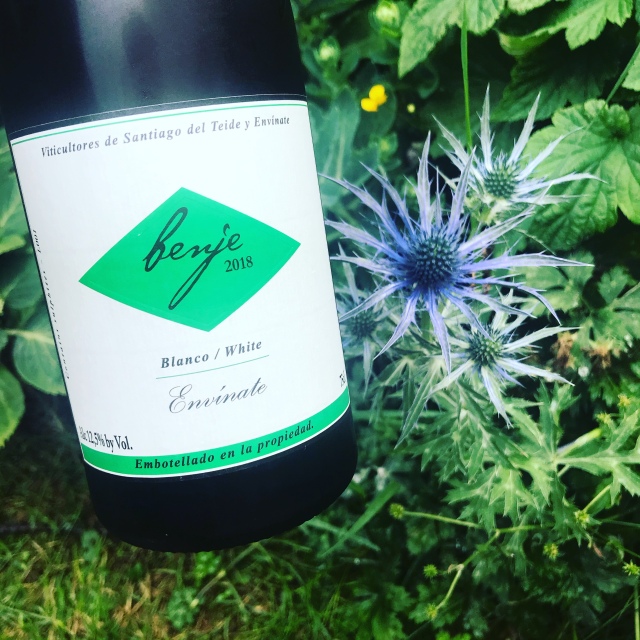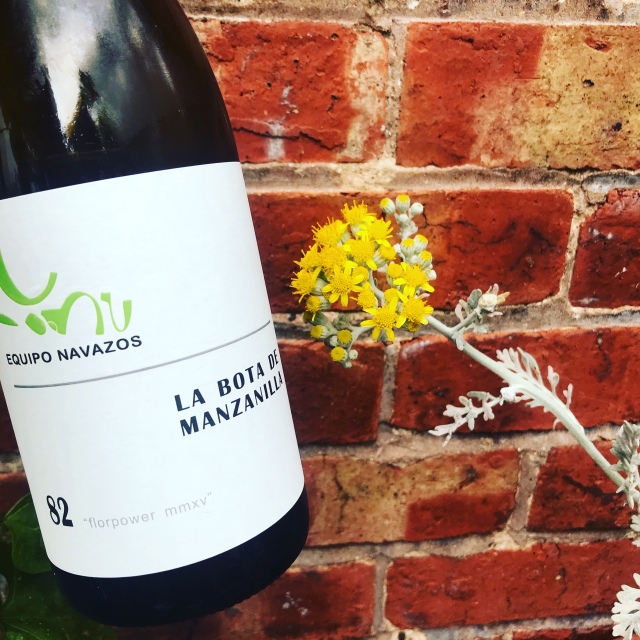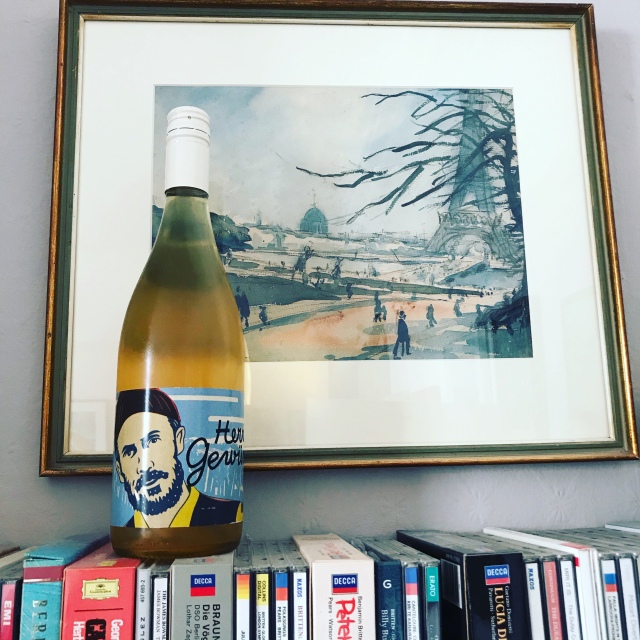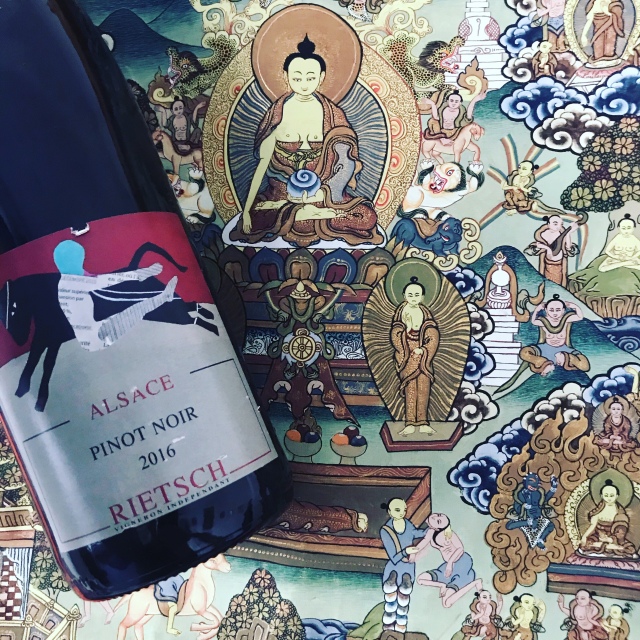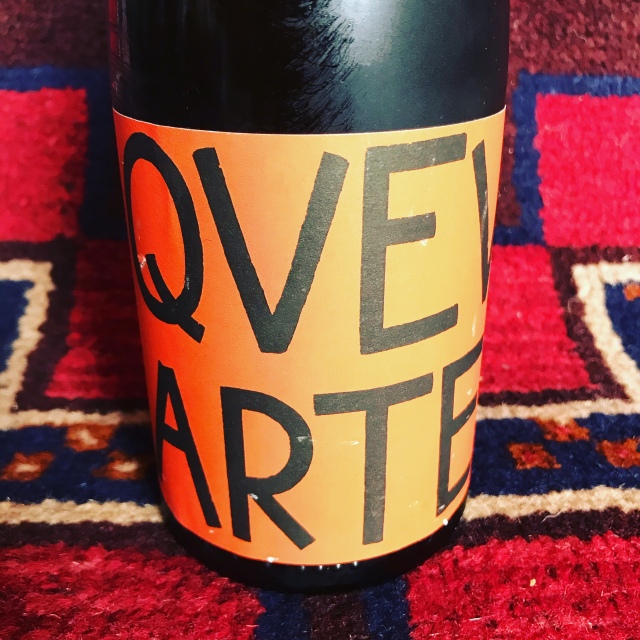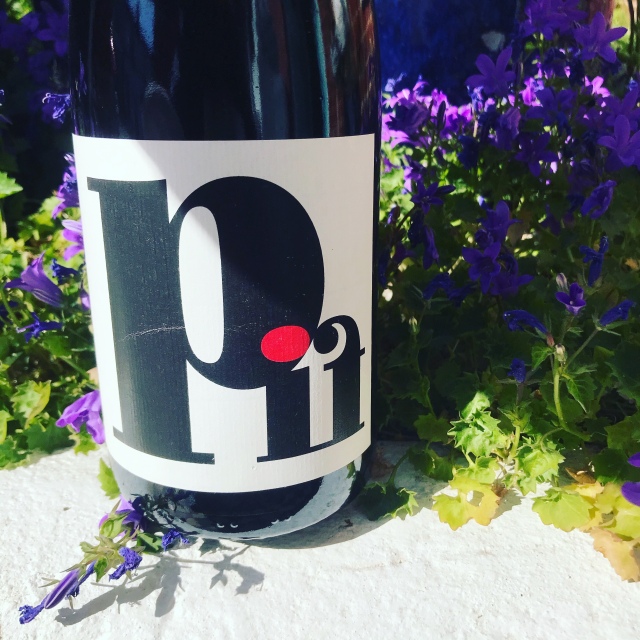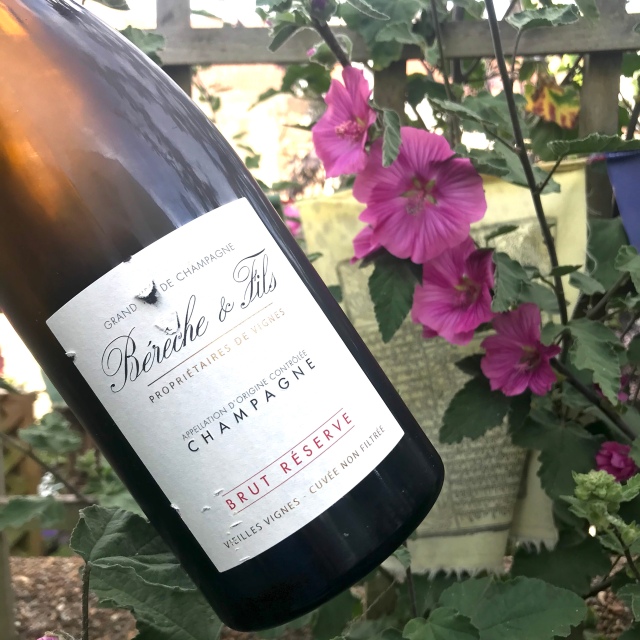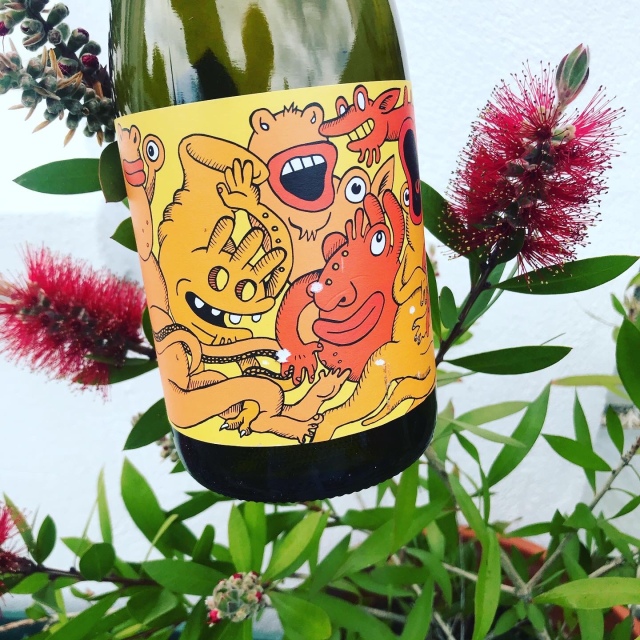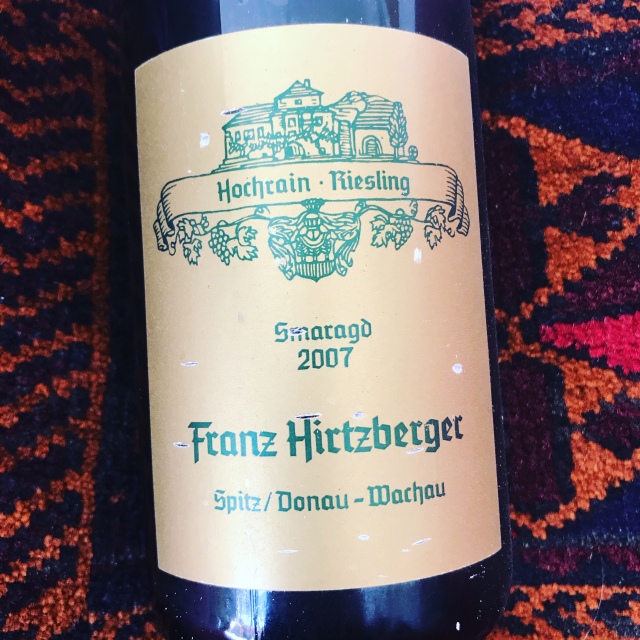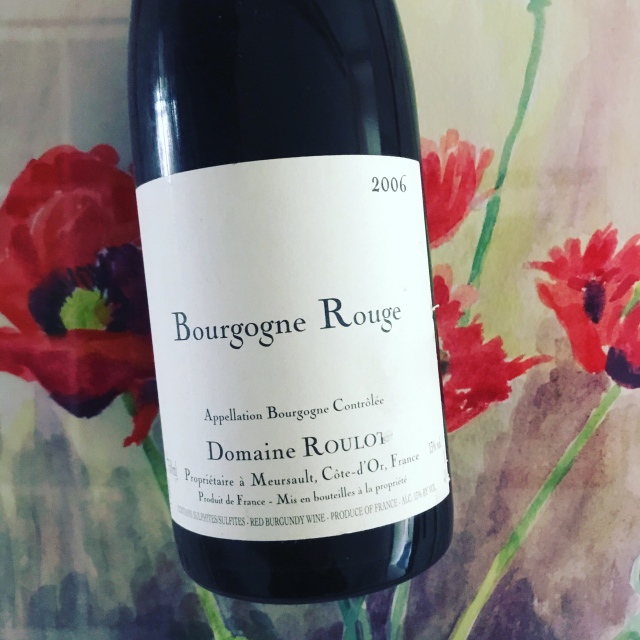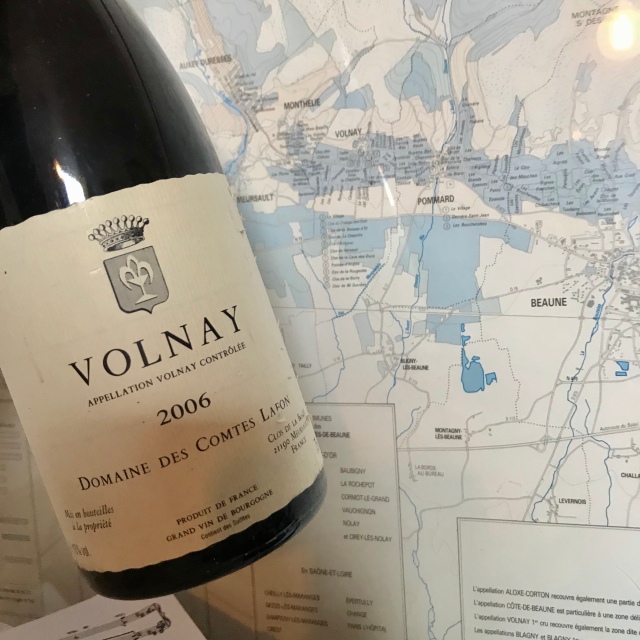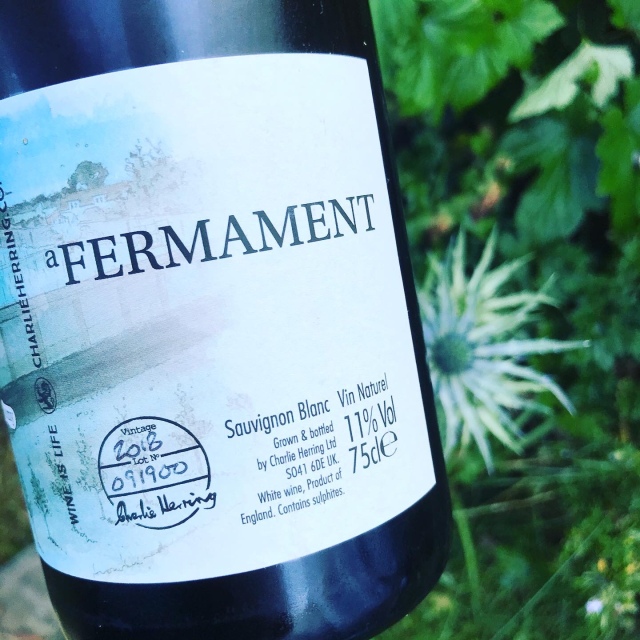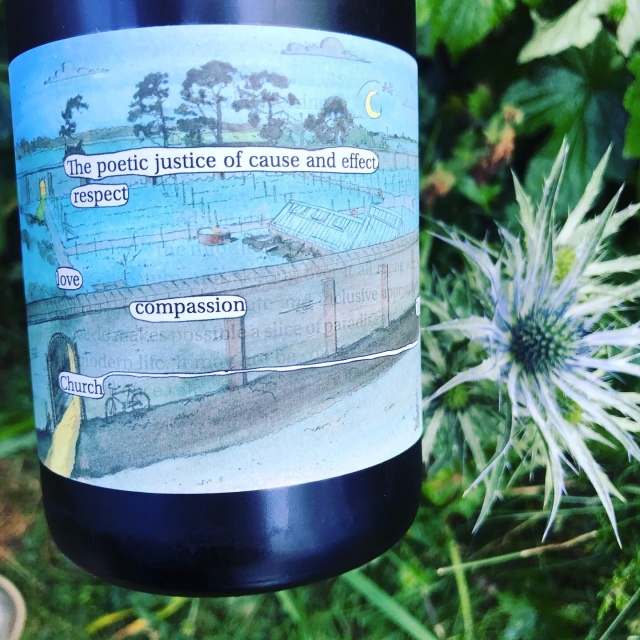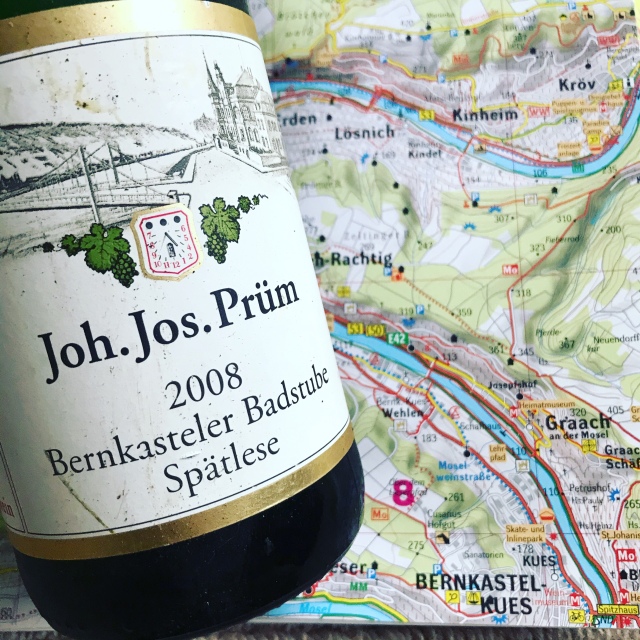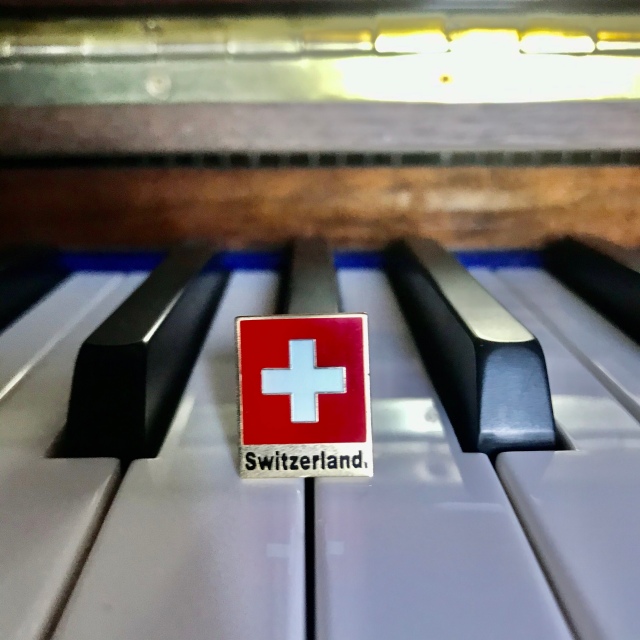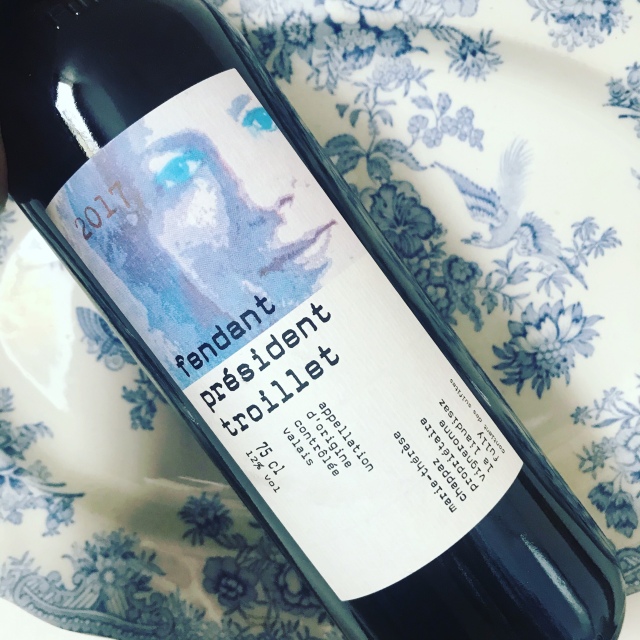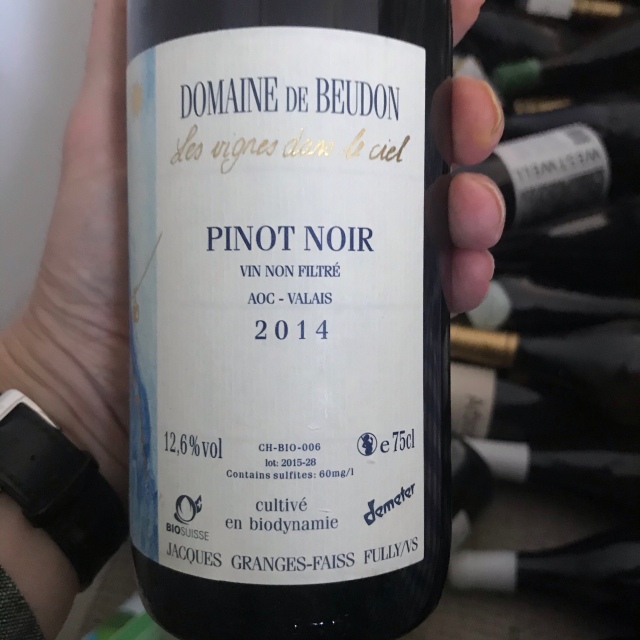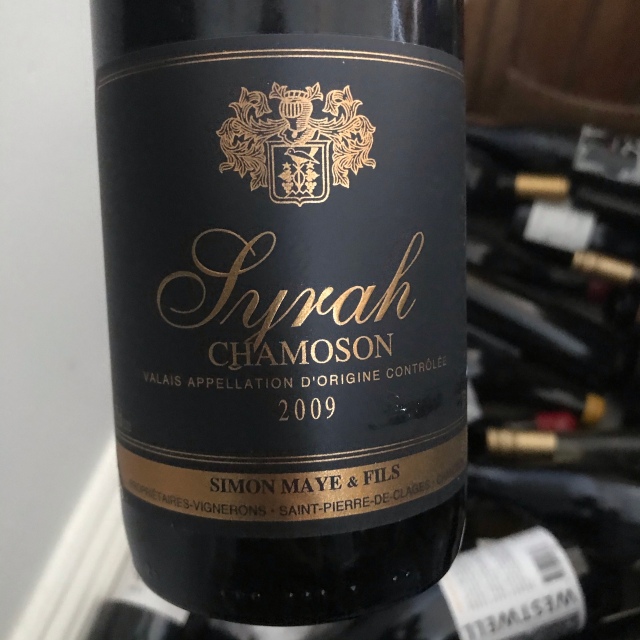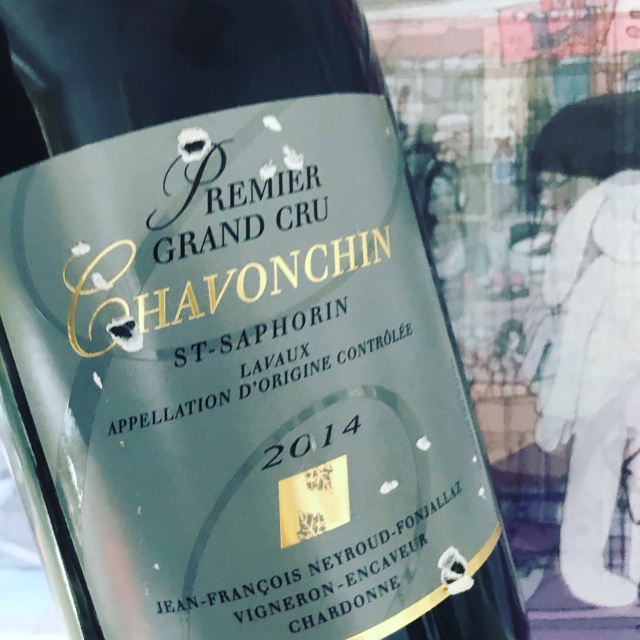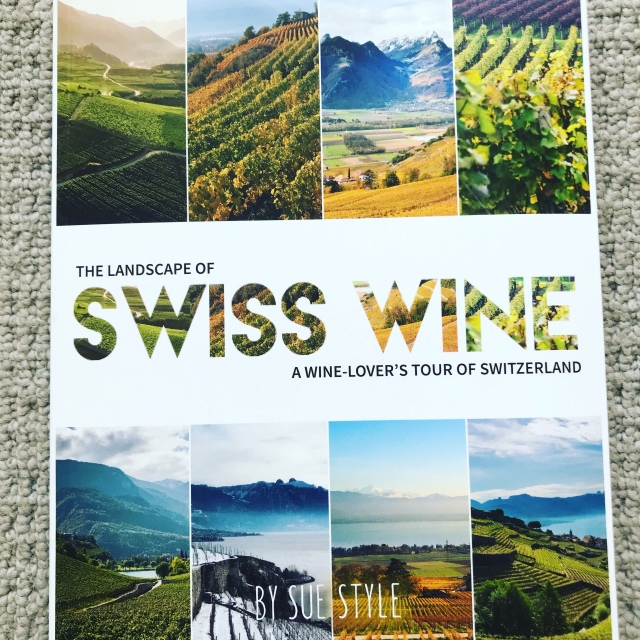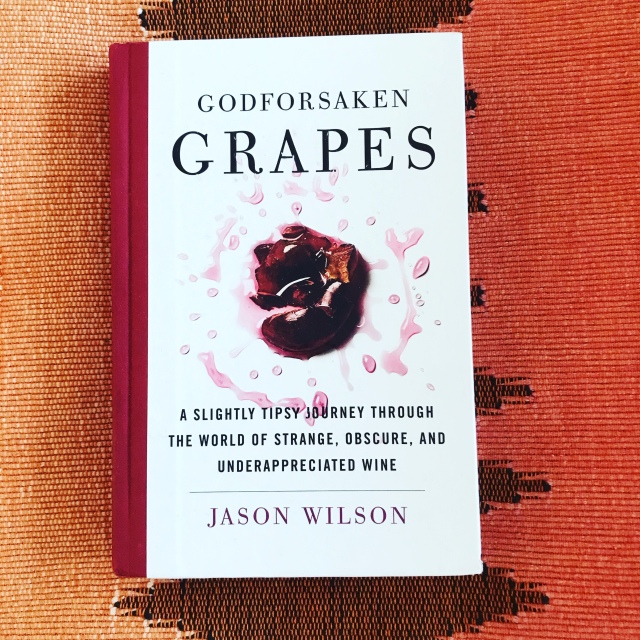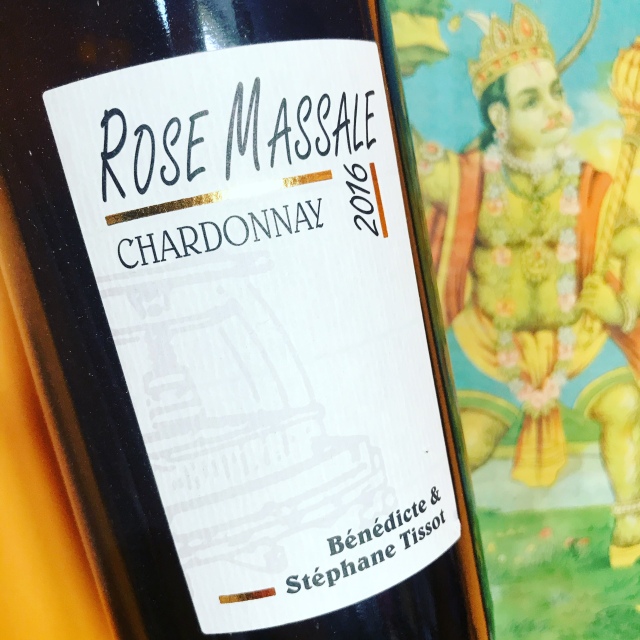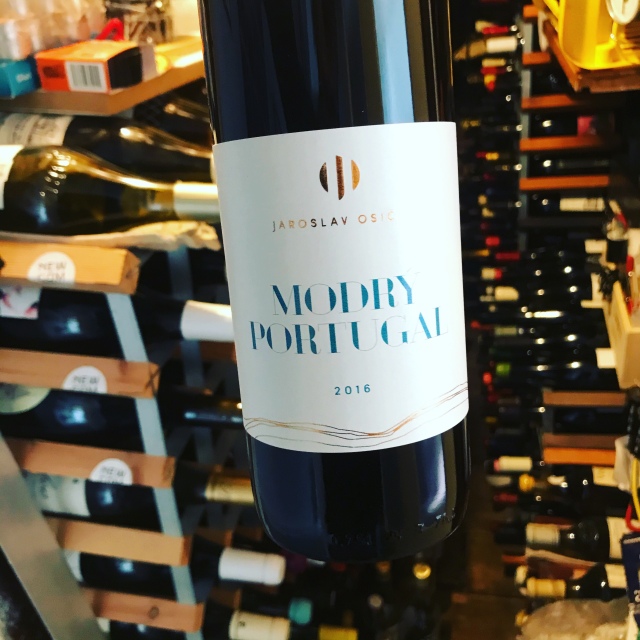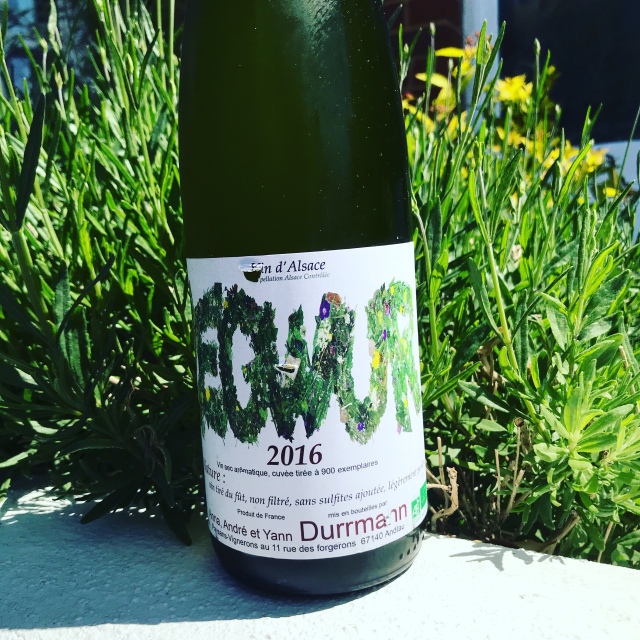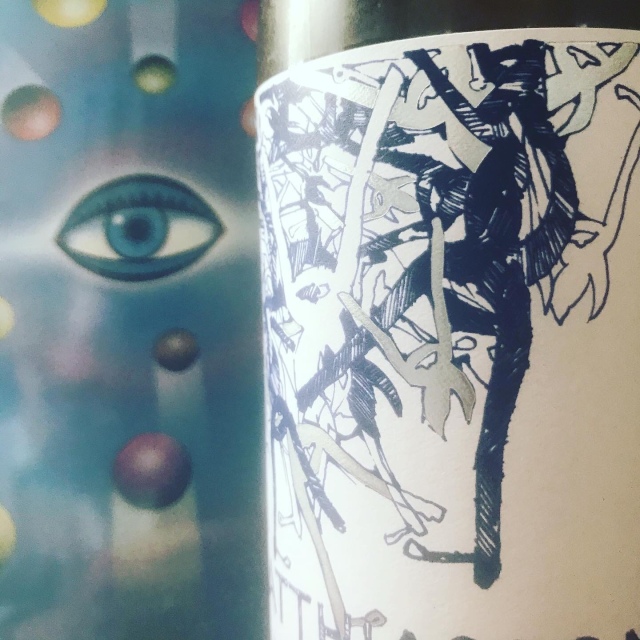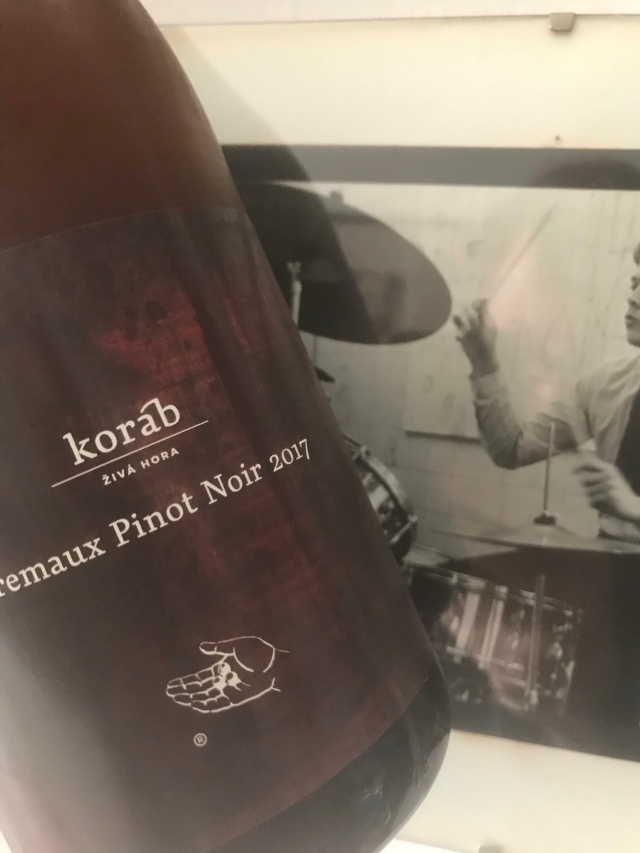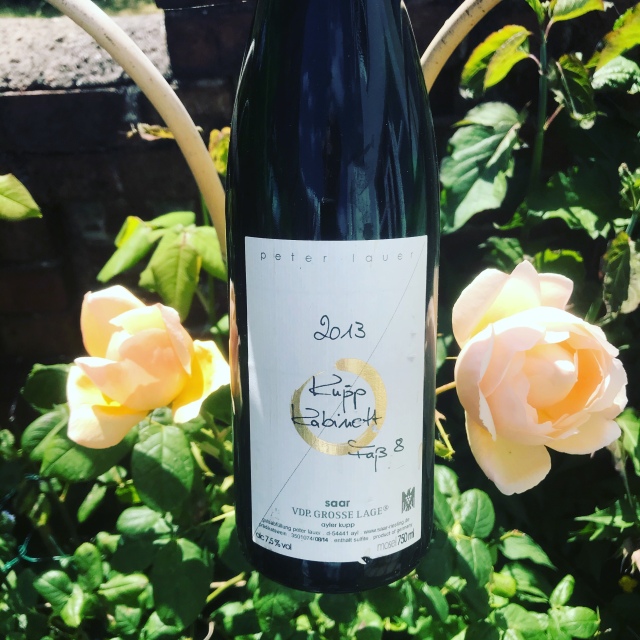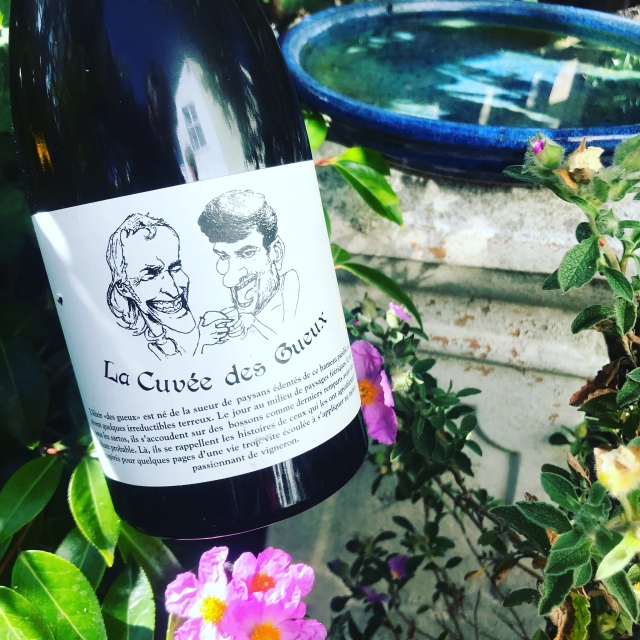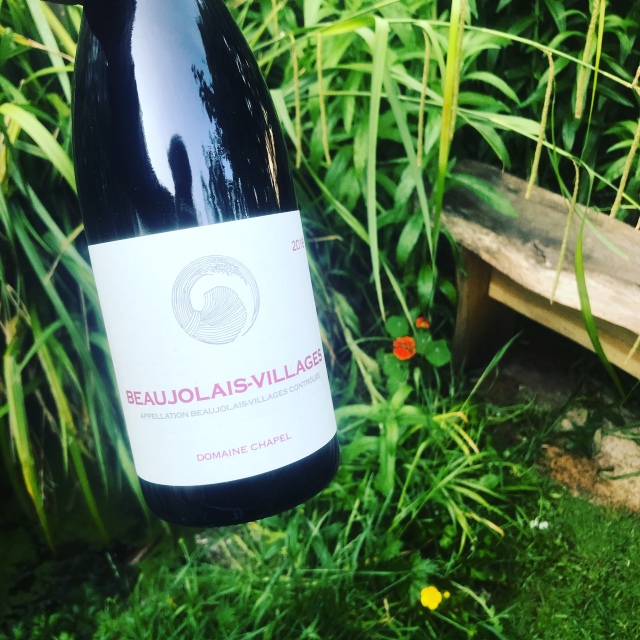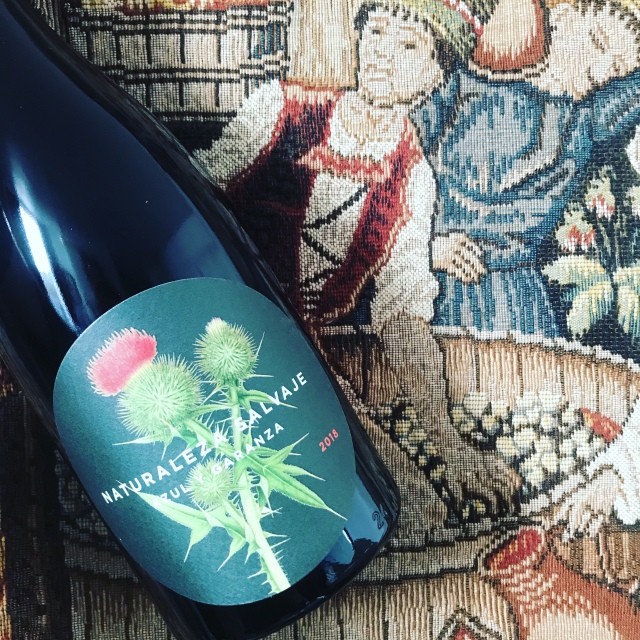There are always going to be places in the world where you just feel that little bit more at home, content, calm. Of course France is the country I know best, better than anywhere in the world. It’s the place in which I’ve spent most time outside of the UK and I’m so well travelled in France that French people occasionally don’t quite believe I’m telling the truth when I tell them I’ve actually been to that village where their granny grew up, or that castle which absolutely no one knows about.
As someone drawn inexorably towards the edges of mountain ranges I suppose if you asked me where I’d like to live in France I’d choose Arbois, just below the Jura, or somewhere in Alsace, not too far from Strasbourg. Those places are both beautiful, and they are both at least reasonably located for further exciting travel within Europe. But there is another side of my personality which is drawn to the German speaking part of Europe. Of course, I love the Mosel, but I have a particular affection for Vienna. I love the art, the food and café culture, and we know a few people there too.
Whilst I can’t imagine visiting Vienna without getting into the vineyards which surround the city, as often as I can I ideally like to get the train or the bus down to the shores of the Neusiedlersee, to visit an arc of some of my favourite Austrian winemakers who ring the shores of the lake. I love to drink wine from all over Austria and other regions (especially Styria) produce a great many wines I’d hate not to have in my cellar, but there’s something about this shallow expanse of water which has, over the past decade or a little longer, generated many of Austria’s most exciting wines.

There’s also something in the air here as well. Perhaps it’s the strangely large number of storks which nest on the rooftops in the villages which surround the Neusiedlersee? Perhaps it is the calm induced by such a large expanse of shallow water, surrounded with reed beds twice the size of the lake, reflecting balmy summer sunshine, or blanketed in warm autumn mists. Whatever it is, the lake seems to engender a zest for life and a genuine warmth among the hospitable winemakers here. I have rarely, if ever, found such a bunch of warm-hearted people as we shall visit today, and that feeling definitely translates into the wines.
We will travel clockwise in our journey, from Rust, located towards the bottom of the lake on its western shore, to Pamhagen, almost on the Hungarian border on its southeastern side. I shall be mentioning a string of winemakers, all of whom I have a personal affection for as people as well as liking their wines. There are others I won’t visit. There are famous names among them, but I’ve never met most them so it’s not quite as personal.
Burgenland is home to other well known producers such as Toni Hartl (from outside the region but his vines are mostly near Purbach), Feiler-Artinger, Michael Wenzel (a star with dry Furmint) and the two Triebaumer estates (Ernst, and Günter & Regina, all in Rust), Altenberger (Jois), Heinrich, Nittnaus, Pittnauer (all Gols) and Willi Opitz at Illmitz, the first Austrian winemaker I ever met – I still have the piece of rusty barbed wire he told me was from the “Iron Curtain”…perhaps like a piece of the “true cross”…sitting within a metre of where I’m typing. All of their wines are usually available on international markets. I’m bound to have forgotten some…many.
What should be noted is that this region, which only became part of Austria in the years following WW1, was one of great poverty. The majority of producers you will meet today do not always go back many generations, but those who do have a genuine pride for their heimat. There is no question that as with Austria in general, the region has benefited immensely from EU structural funding since Austria joined in 1995. The region today seems to be doing very well for itself, especially the wine.
I plan to start in Rust, which Neil Young suggested erroneously never sleeps – this attractive chocolate box large lakeside village may be full of tourists in summer but is otherwise pleasantly sleepy and makes a very good place to use as a base. You can hire small motorboats at the marina and pootle about on the lake for a morning and you can hire bicycles, which can conveniently be taken on the small passenger ferries which cross the lake. If you cycle down to Mörbisch-am-See you can cross to Illmitz, for example, exploring the wonderful wetland bird sanctuary nearby on the eastern shore in the morning before heading into town for lunch.
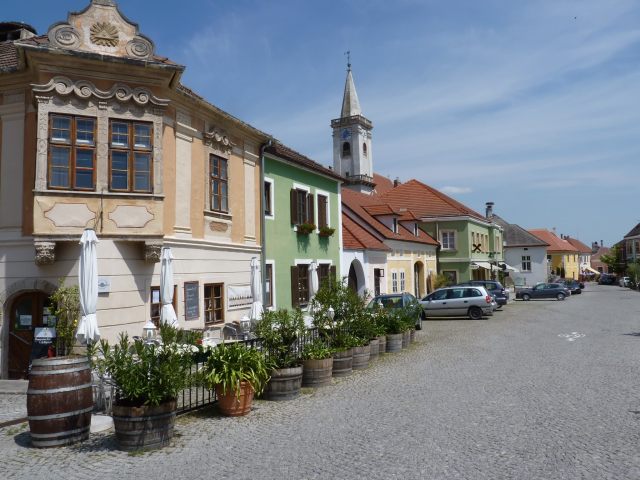
Rust
Heidi Schröck
Well before I’d ever been to Austria I had a desire to meet Heidi Schröck. There was something about her wines which I later found out was a certain character which runs through the region, whether white or red. In one word, “life”. At this stage I had yet to be enlightened by her sweet wines, but we’ll come to those. I finally got to Rust in 2015 and spent a couple of hours with a lady who lived up to my expectations in terms of passion for wine, for her land, and true empathy.
Heidi is quite easy to find in Rust, in the top right corner of the main square. In the days of the Austro-Hungarian Empire there was a definite Hungarian influence here, despite the lake’s proximity to Vienna. The great dessert wines of Rust were almost worshipped by the Hungarian aristocracy in the seventeenth century, at a time when cane sugar was not yet available and a sweet tooth was often best satisfied with a sweet wine. Rust was made a Free City by the Hungarian Monarchy in 1681 and has sort of kept its independence today by remaining outside the encircling Leithaberg DAC, forming a small 440 hectare lakeside vineyard enclave which leaves the wines labelled as Burgenland only.
Heidi’s been making wine here since 1983 and now farms around ten hectares. There are a number of white wines made from grape varieties which may be less familiar to those who do not know Austrian wines well. Here in Rust you will find plenty of Gelber Muskateller and Welschriesling. She used to make a brilliant dry Furmint but had ceased to do so by my first visit. Moving onto the reds, it is perhaps with Blaufränkisch that she begins to get a little more serious. You can choose from “Rusterwald”, aged in oak but a relatively early drinker, or the top cuvée, “Kulm”, made from vines around 65 years old and worthy of ageing up to a decade.
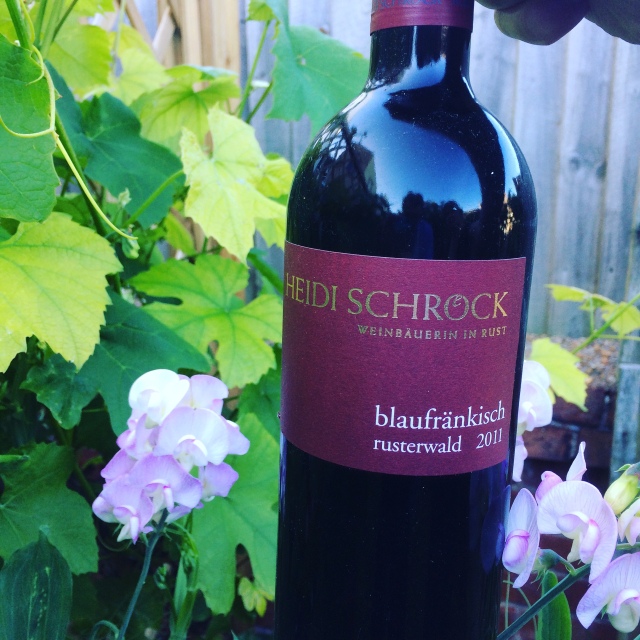
Unsurprisingly, dessert wine is her speciality. Ruster Ausbruch is a fine dessert wine style, often made with a blend of varieties, occasionally as a single varietal. It sits, in terms of sweetness, between beerenauslese and trockenbeerenauslese, and can have a strong botrytis character as a result of those autumn mists I mentioned. With most vineyards to the west of the lake sitting up on the Leithaberg Mountains (in truth a series of reasonably low hills which rarely get higher than 350 masl), those of Rust benefit, in terms of sweet wine production, from their near-lakeside proximity. The wines, at their best, age remarkably well like a fine Sauternes, and I have yet to taste better Ruster Ausbruch than Heidi Schröck’s. She makes several.
Heidi is in theory imported by Alpine Wines in the UK, but as I write, no new wines seem to have appeared for one or two vintages.

Gut Oggau
If you do happen to stay in Rust, and if you have time for even a couple of days there, you can make a very easy cycle ride just a few kilometers north, to the hamlet of Oggau. It sits on the edge of the sandy reed beds with its vineyards lying just inland, to the west. Eduard Tscheppe and Stephanie Tscheppe-Eselböck run Gut Oggau, having restored the 17th century winery in 2007. If you are visiting during the summer season you can combine an appointment at the winery with a visit to their famous Heuriger inn.
I presume most readers will be aware that the wines here are all characters in a fictitious family, with each family member depicted on the label. It is worth explaining some of the logic behind the generations. The youngsters are lively wines grown mostly on gravels. The parents are sourced from sunny slopes on limestone and schist. The grandparents come from similar terroir but older parcels. The grapes from these older vines are gently pressed in the restored 200-year-old wine press.
These are biodynamic, natural, wines which all exhibit a spark of life. I like to glug the youngsters, like the Winifred Rosé I wrote about in Recent Wines June 2020 (Part 2) (8 July). There is a “Brutal” cuvée worth seeking out in this vein. The older generations are worth ageing. I don’t really have a firm favourite, but I have bought and drunk Josephine most often. Josephine is Timotheus’s second wife and therefore Winifred’s stepmother (it can be complicated). But as you would hope when a producer has come up with an idea like this, one that perhaps some traditional drinkers might find confusing, all of the wines have very distinct personalities.
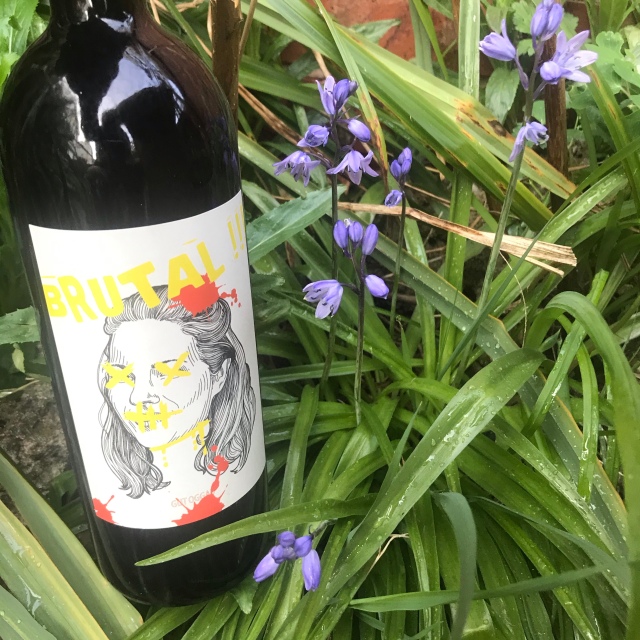
Stephanie and Eduard like to avoid talking about the exact grape blends used in their wines, but I must mention one red variety they have planted, Roesler (aka Rösler). It’s a crossing of Zweigelt and Seyve-Villard x Blaufränkisch, developed in 1970 and named after Leonard Roesler, a former director of Austria’s oldest viticulture college. It is both mildew and frost resistant, but it is also very high in extract. This makes it reasonably easy to spot once you know it, even when it forms a small part of the blend. Schist and limestone soils might slightly accentuate this quality, but in small measure I think it really adds something to the blends in which it is used.
Also look out for their Weinland Brut Nature, a petnat fermented in bottle without disgorgement. The UK importer for Gut Oggau is Dynamic Vines, who get Eduard and Stephanie over to their Bermondsey warehouse pretty much every year. There aren’t many producers I’d rather spend an afternoon or evening with. For me, these are eyewateringly empathetic wines.

Birgit Braunstein
Birgit has many things in common with Heidi Schröck, not least that they are good friends. Generations of the Braunstein family have been making wines around Purbach for 400 years (1632 is the first record). Birgit is another producer who has embraced biodynamics. Perhaps I forgot to mention, but Steiner’s philosophy has something of a strong following around the shores of the Neusidlersee. If there’s also a feeling that Burgenland is fertile territory for female vigneronnes it should be noted that Birgit also has a female cellarmaster (sic), Adriana Gonzalez, who is in charge of making wine from the family’s 22 hectares.

Birgit
Birgit’s range comes off complex soils around her Purbach base. The gravel, schist and limestone found further south are joined by a more chalky limestone, with gneiss and mica, along with some clay and marls. The range begins with a very nice Welschriesling and moves through Pinot Blanc and Chardonnay, and there’s a lovely summery Rosé from a blend of Zweigelt and Blaufränkisch. Some of the best blends around here add Saint Laurent to that pair, perhaps my favourite red being the unfiltered Wildwux.
Birgit also makes a very interesting range, labelled Magna Mater, in amphora buried in her garden of all places. These amphora wines are not yet imported by her UK agent, Indigo Wines, but they do bring in a range nowadays brimming with life and personality, taken in recent vintages to another level by Adriana and Birgit. Try both the Chardonnay and Blaufränkisch Magna Mater, which see eight months buried 1.5 metres below the surface macerating on skins and pips. Did I mention that the vines are not pruned? We shall see more of this kind of viticulture at the end of our journey, but this experiment with giving nature its freedom, along with the long maceration under the stars in amphora, produces soulful wines which somehow even taste as if they have resolutely gone their own way.
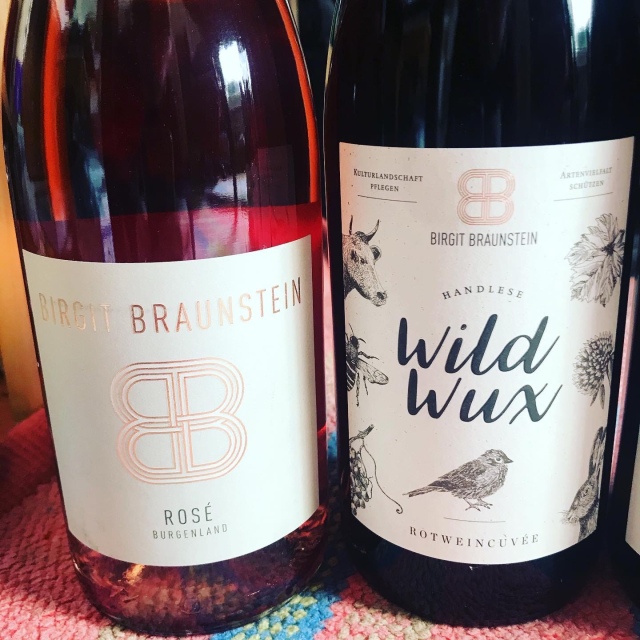
Joiseph
Joiseph is a partnership between three friends, but the very young face of this operation, based around the village of Jois almost right at the top of the lake, is Luka Zeichmann, and it is Luka you are most likely to meet, especially at the natural wine fairs around the world. This small estate was only founded in 2015, but its reputation already far outstrips its size and age.
There are 5.5 ha of vines managed by the partners, which has grown from just 3 ha two or three years ago. Most of their vines sit on the slopes of the Leithaberg Mountains looking southeast, over the lake. They began with almost nothing, certainly no tractor for the vines, and initially no cellar. Now they make, well, at last count I think eight wines. All of them are truly made with very limited intervention.
It is pretty much impossible to single out favourites here. The wines are generally quite hard to source, and I get mine from UK importer Modal Wines. Look first for Fogosch, a Grüner Veltliner with a tiny bit of skin contact, appley and stony. Mischkultur Gemischter Satz is a field blend from 100-y-o vines. This is more reminiscent of tropical fruits, but with a faint nuttiness too. Piroska is an emphatically summery pale red blended from Blaufränkisch, Pinot Noir and Zweigelt, which is just pure fruit and easy to drink. By way of contrast Tannenberg is 100% Zweigelt from a mix of slate and limestone. The slate adds real mineral tension. In some ways it tastes the most classical of the Joiseph wines, yet still bursts with energy and tension.
A future star for sure!

Luka
Koppitsch
Just down the road from Jois you will soon reach Neusiedl-am-See, that is unless you are cycling into a strong wind which can blow up from the Pannonian Plain, even on a hot day (good for sailing and windsurfing). Here you will find Alexander and Maria Koppitsch. Well, I hope so. I have met this couple several times over several years, in both London and Vienna, but I’m yet to visit their winery. It was meant to be in April this year, but my trip to Vienna was cancelled so it didn’t happen.
Of all the new natural wine producers around the lake, Alexander’s wines are probably the least known in the UK. They are in theory imported by Jascots in London and by Fresh Wines, based in Kinross (Scotland), but for whatever reason the number of cuvées and bottles imported are limited. Especially frustrating when they make one of summer’s essential petnats.
Although Alex and Maria are the new generation, so to speak, taking over here in 2011, the Koppitsch family has been making wine for 500 years, with knowledge of this terroir at the top of the lake passed down from grandfather to son, to grandson and more. The wines are biodynamic and made without additives except for as little sulphur (if any) as Alex feels is needed.
It’s interesting here because as with so many of the new Austrian producers, the focus has ceased to be so much on grape variety, and much more on the soils and general terroir. What does the land give us? With twenty different plots over around six hectares to get on top of, they do have their work cut out.
Don’t miss the entry level wines here, with their stylised fun labels. Many come from flatter land near the lake and express the textures of sand and gravel. The more serious and ageable Perspective wines reflect the slate and limestone of the slopes of the Leithaberg, whilst other plots are on what is known as the Wagram Ridge to the northeast, where alluvial deposits and large river stones are what is left from a far older Danube.
There are more wines to get to know, but I’ll let the reader seek them out. My “Recent Wines” articles have been peppered with a few of them over our Lockdown period.
Alex and Maria partying in Vienna
Renner und Rennersistas
After learning their trade in Southern France and South Africa Stefanie and Susanne Renner returned, in 2014, to the winery which their parents Helmuth and Birgit founded in 1998. I’ve met Helmuth, and tasted his wines. They are impressive, and he had become a mainstay of the Pannobile wine growers association originally based in Gols, where the winery is located, before his daughters came back and turned everything upside down.
I am full of admiration for Helmuth. When his daughters returned they came back with all sorts of crazy new ideas and a desire to make “natural wines”. To be fair I think no one in the world could have resisted the enthusiasm of the two sisters, but thankfully this is combined with drive, determination, confidence and competence.
The Renner holding is a fairly reasonable 12 ha, giving them a range of terroir and an even wider range of grape varieties to work with. Their vines start westwards, at Neusiedl-am-See, flowing eastwards through the neighbouring villages of Weiden, Gols and Mönchof, with an outlier further east, and further from the lake, at Halbturn.
There are certainly too many wines to mention here. You would really have to begin with all three colours of Waiting for Tom, which were my first intro to Susanne and Stefanie’s wines in their debut vintage. Next I would suggest you seek out two newer cuvées. Superglitzer blends Zweigelt, Sankt Laurent, Rösler (that variety we met back at Gut Oggau) and Blaufränkisch, a red to drink cool, or even chill.
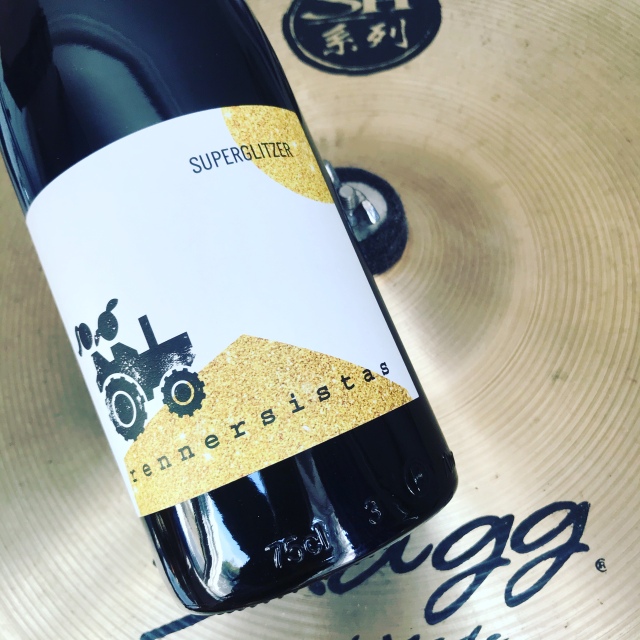
New from the 2019 vintage is Intergalactic, a lively white with just over a week on skins and nine months on lees. The first three quarters of the blend is made, approximately, from more or less equal parts of Chardonnay, Grüner Veltliner and Welschriesling, the last quarter being 17% Muscat Ottonel and 6% Gewürztraminer.
These wines are all super-easy drinkers and they all have fresh, fruit-driven, acids. Apparently the new 2019 vintage of the petnat “In a Hell Mood” has even greater acidity. In 2018 it was a blend of St Laurent and Pinot Noir, but in ’19 St Laurent goes it alone, and with just 10% abv. I’m told it’s both super tasty and moreish. In a Hell Mood has proved a challenge in the past for some people I know, but the adventurous will reap the rewards.
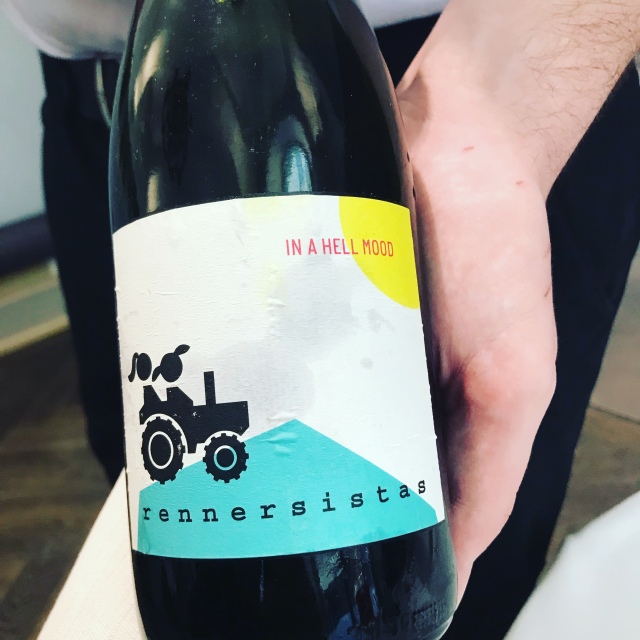
All the wines here are Demeter Certified biodynamic. If you can visit their Gols winery and buy wine to take home you should certainly give Helmuth’s Pannobile bottles a taste, but those are more classical wines which truly need bottle age.
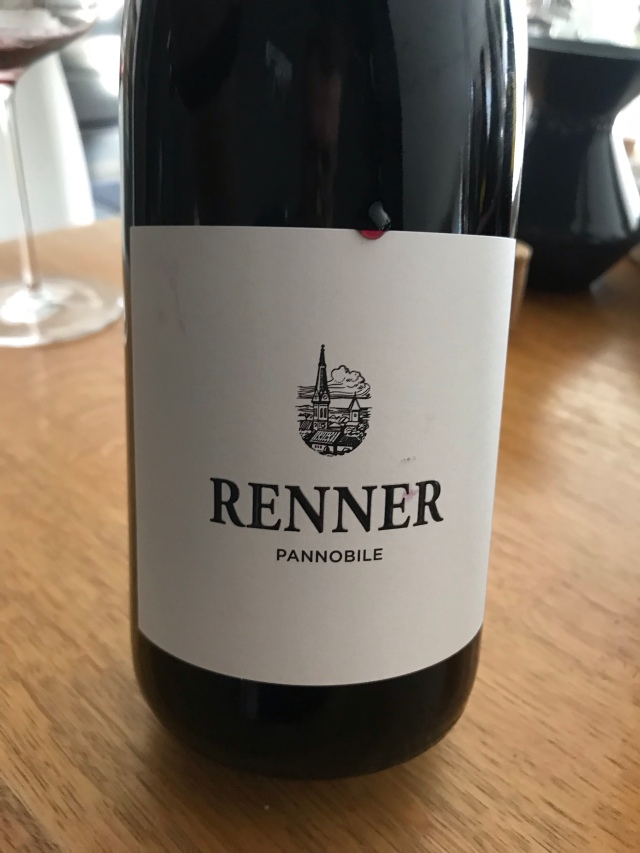
Also new for 2020, Georg Renner. The sistas’ bro, Georg has joined the team. Not totally sure what that does for the Rennersistas name, nor for their wonderful labels which depict the two young women on a tractor. And anyway, Susanne now has a young family of her own, up the hill in Gols, with the next guy in this article. But these are wines I love with a passion, because it’s passion which made them.
Newcomer Wines imports Rennnersistas into the UK.
Claus Preisinger
Claus began making wine merely as a hobby with his father. Now, twenty vintages later he has a rather splendid architect-designed concrete winery above Gols, with a large tasting balcony looking out over the lake. Claus was the first of the “new wave” of young Burgenland producers I tried when his importer, Newcomer Wines, first opened their innovative Austrian wine shop in a small shipping container at Shoreditch Boxpark (where they remained for several years until their move to a larger London base out at Dalston Junction).
I think the first bottle I bought was his simple but oh so tasty Zweigelt. Claus continues to make several easy drinking cuvées from his 22 hectares (he started out with just 3ha) spread over a challenging yet at the same time rewarding 64 different sites. Do not miss Puszta Libre (Zweigelt and St Laurent), nor the amphora-aged Dope, which is orange in colour but does a really good impression of blueberry pie (Blaufränkisch).

Claus in London at the RIBA
Head to Claus’s place if you really want to see how a winemaker reacts and changes his whole way of doing things depending on what the vintage throws at him. All the wines are, of course, biodynamic and low intervention, just don’t expect this year’s model to taste the same as last year’s.
Moving up the range, I’ve always been a big fan of Kalk und Kiesel (both in red and white), which are partly aged in amphora. There is nothing here I would not recommend, but his skin contact Pinot Blanc, ErDELuftGRAsundreBEN, is outstanding on any level. I last drank this with glasses perched on a surfboard, standing on Claus’s cantilevered balcony on a very hot summer’s day, before deciding to spend the afternoon cycling around the lake. Actually, contrary to what you might think, we thoroughly enjoyed the ride.
Claus is an instinctive winemaker and he makes a range of rather distinctive wines. I also happen to think that under his sometimes dry exterior he’s one of the most seriously creative talents in all of Austrian wine.
Judith Beck
Judith is also based in Gols, where today she farms around 5 ha of vines biodynamically (as a member of the Respekt Group). Judith worked in France, Italy and Chile before coming home to take over the family winery, founded by her father, in 2001. The whole approach here is deeply wedded to biodynamics, so there are many of the plants associated with the required biodynamic preparations grown here as well as grapes.
The vines are for the most part on lower land on the northeastern side of the lake, towards to gentle slopes of the Wagram Ridge. The soils are too diverse to list, but there are six main varieties at the Beck estate, fewer than many local growers (mostly Chardonnay, Pinot Blanc/Weisserburgunder, Welschriesling and the three local red classics, Zweigelt, Blaufränkisch and St Laurent).
I will say that my experience of the whole Beck range is less wide ranging than with most of the other producers in this article, but some of her wines provide such good value drinking that I am unfortunately too often giving them away. They are literally never under-appreciated and in fact we took the first wine mentioned below to friends’ a week ago. They loved it.
Beck Ink is a Zweigelt-St Laurent blend which you would describe as “zesty”, perhaps an adjective more usually associated with white wine? It is light but the fruit is concentrated and intense, like squid ink, yet its lightness just refreshes. With 12% abv it can be drunk with spiced food or stews, but equally is a pretty good choice on its own (or with olives, as we drank it last time).
The Beck label is one chance to try the Neuburger grape variety. Neuburger Bambule is fermented in clay. The variety is a crossing of Silvaner and the fairly obscure (but often lovely) Roter Veltliner. The chance to taste Neuburger is quite rare, though I sense a little rejuvenation of interest in the variety of late. The wines can have quite a bit of body for a white and I think the variety does quite well in this fermentation medium. I believe ageing is in old wood, though.
I’ve read criticism of Beck for changing her range all the while. Generally speaking, I’m quite drawn to producers who like to vary their canvas. New ideas can be way more exciting than making the same wine every year. It kind of makes sense if you have a small plot in a Burgundian lieu-dit or similar, but it’s nice to see someone using their imagination without such constraints occasionally.
Les Caves de Pyrene imports some of Judith Beck’s wines.

Christian Tschida
Christian Tschida is based in Illmitz, which I have visited only once, using the ferry from Morbisch and considerable peddle power. Whenever the name Christian Tschida is mentioned you often see it followed by some sort of enfant terrible description. This is wholly unfair. If Christian isn’t into the rock n’roll circus of international wine ligging it’s because he’s so passionately focused on his vineyards. They are mostly old vines with deep roots, full of biodiversity, and they undergo minimum pruning…but they are responsible for his outstanding fruit.

Christian
Christian is the fourth generation to farm the ten hectares or so around the village on sand and gravel or schist and limestone. Winemaking is very simple. The grapes, which have to be perfect in terms of health and optimum ripeness, are mostly fermented outdoors (though in shade) in open-top vats. They move inside for ageing in old wood, usually for extended periods (up to five or six years), during which contact with oxygen is generally allowed, even encouraged. There’s no racking and no sulphur added. Just a little carbon dioxide protects the wine from oxidation.
As with everyone mentioned today, any wine will be worth the effort to try, but I most often enjoy the Himmel auf Erden range (Heaven on Earth) myself. All those wines are superb but I will single out the Rosé made from direct press Cabernet Franc off schist and limestone. Many (not just me) think it’s one of the best pinks in Austria. Crunchy or what? Otherwise look for TNT (Blaufränkisch) and Christian’s Brutal Cuvée (the 2018 was a Pinot Noir and importer Newcomer Wines had this in magnums, just saying!).
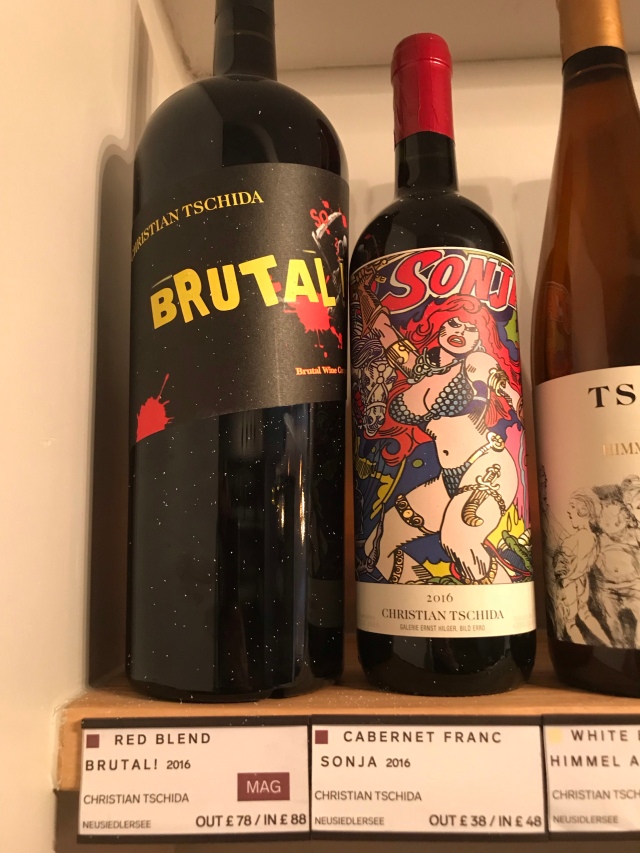
Kracher
I never met the late Alois Kracher, although a visit there many years ago was cancelled at the very last moment when my lift to Illmitz was unable to make it. I have met Gerhard, his son, who having been mentored well by his father is carrying on the Kracher tradition. That tradition began in 1986 when Alois took over from his own father, who already had a reputation for fine Neusiedlersee wines. Alois very much had an international outlook, and his exceptional winemaking skills enabled him to mix with the cream of European sweet winemakers. He put this small Illmitz estate right up there with the very best.

Gerhard in London
Alois created two ranges. Zwischen den Seen are cuvées aged in neutral wood, usually acacia. Nouvelle Vague (New Wave) is a nod to modernity with wines aged in new oak. Each vintage there is a “Grande Cuvée” based on the criteria of harmony in the wine…the most harmonious if you like. Some think it is the sweetest, but this is far from correct. At the other end of the scale of price if not quality there will usually be a Beerenauslese cuvée. In between are Tba’s made from a range of grape varieties, anything from Welschriesling or Muscat to Chardonnay, all of which have a number based on their level of concentration. So you may well find a Tba from the same grape variety but with a different cuvée number, or you may likewise fail to find some cuvées in some vintages.
Don’t worry too much. Most of the wines seem to age forever but taste marvellous whenever you drink them (except very young with some of them). They rarely lose their intensity and it takes a long while for them to lose their signature acidity. If the phenomenal number of wines produced here were not enough, Alois embarked on many joint ventures. The only one I’ve ever tried is that which he made with the Queen of Rust, Heidi Schröck. I understand there are wines made with Ordonez in Malaga and with Manfred Krankl (of SQN in California). I’d love to taste that one.
Most of the Kracher wines I have bought in the UK came in via Noel Young Wines (now NY Wines) in Cambridge. They usually have at least a dozen to choose from on the list. I think you might need to visit Illmitz to get hold of the large formats in which these wines are sometimes released to collectors.
Meinklang
Finally, realising we are looking at a fairly long article already, we drop down to our final producer, at Pamhagen. We are almost in Hungary here, and in fact Meinklang also own a couple of Hungarian hectares of vines in a region where their family used to farm before the days of Communism, on the rather unusual flat-topped Somló Massif, further to the south. Meinklang is a large wine producer with more than 70ha in all under vine, though they are still perhaps best known in Austria for their fine beef cattle (and they also make very fine beer, brewed in Salzburg, from ancient grains grown on their farm near Pamhagen, which you should not pass by the opportunity to drink).
The Pamhagen vineyards are partly farmed by a method known as Graupert. Remember I mentioned this before? Around the world quite a few enlightened wine growers are using this method of viticulture, whereby the vines are by and large left to their own devices. Pruning is limited, and the ideal is really just a little repositioning of the canopy. The results are twofold, both unexpected.
First, the vines over time self-regulate, so that the canopy does not grow as wild and vigorously as you would expect (I prune so frequently at this time of year, but I never have the courage to see what would happen if I didn’t…I expect my neighbour would not be amused by the experiment). Secondly, somewhat counter-intuitively, far from this method providing greatly elevated yields, the vineyard self-regulates fruiting as well as vine vigour, and the crop is usually smaller than in a fully pruned vineyard.
Meinklang makes a large range of varietal wines, all excellent value. But the Graupert wines are lovely, as are the red and white Konkret cuvées, made in concrete eggs. These are serious wines, and the Michlits family is serious about their eggs. They claim that the “golden ratio” of the eggs’s dimensions allows a unique dynamic flow of juice and lees, which gives life to the wine.
This is all totally in contrast to the fun pink frizzante called Prosa, made from Pinot Noir with Zweigelt, Blaufränkisch and St Laurent. Thirst quenching and fruity.
I think that’s probably enough recommendations for one day, except that if you don’t spot the Urkorn Beer I mentioned, then try to spot the biodynamic sparkling cider called Foam. With all the hype around natural cider right now I have never seen any of its advocates write about this (unless they stopped making it?). Amazing stuff.
Meinklang is brought into the UK by both Winemakers Club and by Vintage Roots. They tend to list different wines from the extensive Meinklang range.
Stuff do do etc…
It’s probably worth making a few recommendations for visitors to the shores of the Neusiedlersee before we leave the region. Some of these recommendations will have appeared in previous articles but they bear repeating.
I have always visited the lake from Vienna and there are two ways to do this if you don’t want to hire a car. That said, if you wish to make a full tour then a car is probably essential.
You can get down the western side of the lake by bus from Vienna. In particular, this is the best public transport option to Rust, which doesn’t have a train station. There are both direct buses and those where you have to change in Eisenstadt, so be sure you know which bus you are on.
In Rust there are lots of options for accommodation, and dining, in what is a popular tourist destination. If you want something a little different look at the Mooslechners Rusterhof. The courtyard suites are something a little different, though be aware that this is also sometimes a wedding venue. There is no restaurant, but the town is packed full of dining options at all levels.
Rust is a great place to see storks nesting, and the Town Hall has some screens near the tourist office, where you can see them close up as each nest is covered by a camera. When one swoops low over the Square it is quite something.
There is a cycle hire place by the main square in Rust. Definitely cycle to Oggau so you can have a sip of wine, even if you have a car. If you have time, then cycle south to Morbisch for the ferry over to Illmitz (check on the timings to avoid missing the return). You will want to enjoy the wetland bird sanctuary west of the village, by the lake, and there are lots of hides and towers to use. Local tourist offices and the bike hire have cycle maps. There’s a ferry from Rust but it traverses the lake to Podersdorf, not Illmitz, and takes much longer. This could be an option for a circular trip but do check timetables.
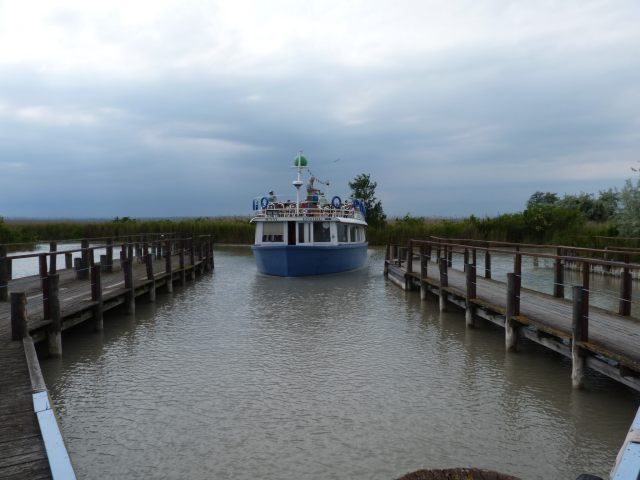
Morbisch to Illmitz Passenger Ferry
From Morbisch you can also ride south into Hungary. There’s an old pre-EU border post, but the border is merely a white line on the track. There’s an Iron Curtain cycle trail down here too. And look out for the Mangalica Pigs en route between Rust and Morbisch. If you have never seen one, look them up. They are gorgeous creatures which look like a cross between a pig and a sheep.
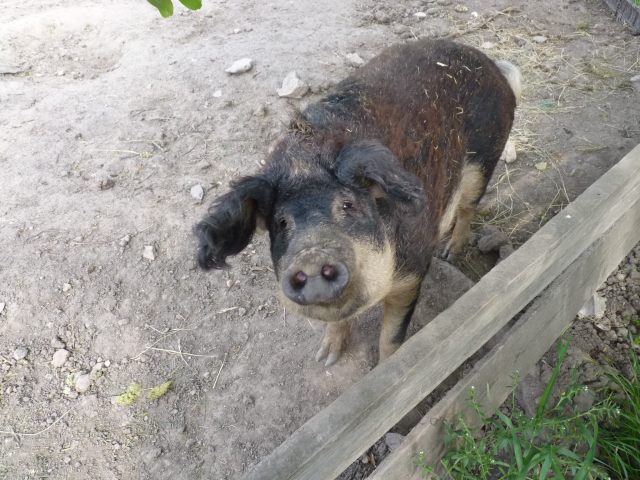
As I mentioned towards the beginning of this article you can hire small motorboats from Rust’s marina (20-30 min walk). They are fairly slow, deliberately so as the reed beds shelter nests, but you can pass a wonderfully relaxed few hours among the watery pathways between these reed beds. You can head out on the open lake as well, which is after all rarely more than a metre deep, but it can get remarkably choppy (they won’t let you hire a boat if it is very windy).
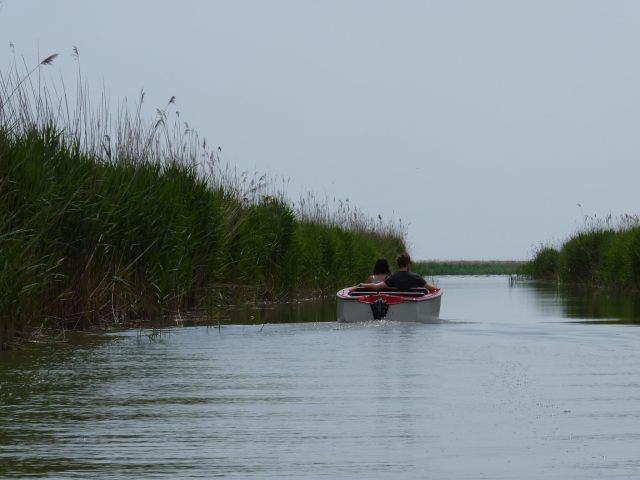
If you want to hit the north side of the lake you can catch a train from Vienna to Neusiedl-am-See, where there’s a cycle hire next to the station (worth advance booking cycles at this one). Again, there are some direct trains and some require a change, so check them out. I have also found return trains to Vienna can be infrequent in the evening.
On the northeast end of the lake is the marina just outside Neusiedl. The restaurant here called Mole West is well worth a visit. It gives Neusiedl as its address but I am convinced it’s closer to Weiden – it’s effectively 2km round the lake, eastwards, from Neusiedl and marked on the cycle map as “Bad” because there’s a bathing beach. I’d recommend referring to Google Maps for exact location. You can sit outside by the moored-up boats and enjoy a bottle of Claus Preisinger Rosé maybe, perhaps with some food whilst watching the sunshine reflecting off the lake. I can tell you there is nothing better after a day in the saddle, though I’m sure the last pull up to the railway station isn’t anywhere near as steep as it seems after indulging in some post-exercise alcoholic re-hydration.
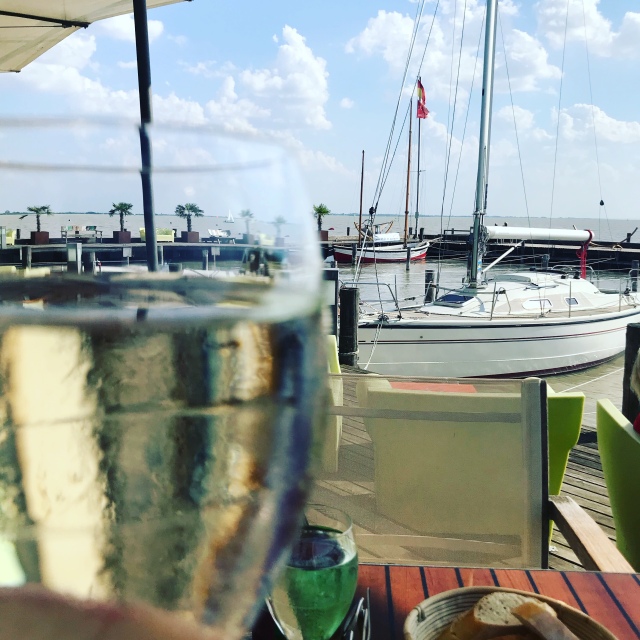
Mole West
As an example of what you could think of doing by cycle here, arrive in Neusiedl as early as you can. You can ride to Gols, via Weiden (maybe a coffee stop) on main roads, mostly with a cycle lane, which are not all that busy. From Gols it’s possible to ride via small lanes down to Podersdorf. You could be adventurous and go on to Illmitz (time permitting), or you could follow the lakeside cycle path back to Neusiedl (the tourist cycle map will show the way to Mole West). Pamhagen either requires a slightly more professional standard of cycling, or four wheels.
Some useful distances on a bike from Neusiedl-am-See:
- Gols = approx 20 minutes without a strong head wind
- Podersdorf (via back lanes)= 35-40 mins
- Illmitz = 1 hour 10 mins
- Pamhagen = 1 hour 45 mins
Gols to Podersdorf directly is around 30 mins; Mole West to Neusiedl railway station is 15 mins without taking account of wine consumed. Rust to Oggau is only 15 mins and Rust to Morbisch is a little over 20 mins by cycle paths.
Rust to Illmitz by cycle via the ferry from Morbisch takes under an hour, but that doesn’t take account of any waiting for the ferry, which is inevitable unless you time it just right.
The Hungarian border is, I would say, less than 2km from Morbisch-am-See.
I should probably stop now before I hit 6,000 words [oops, I did!], but if I can just briefly head back to Hungary, on the Western side of the lake, here we have the large town of Sopron, which has its own wine region. Winemakers like Franz Weninger and Peter Wetzer make wonderful wines and you can see a degree of viticultural continuity between Burgenland and this Hungarian enclave to the south of the Neusiedlersee. But we are straying from the brief.
Many wine friends have been drawn to Vienna for its great natural wine scene, with so many exciting restaurants, not to mention the art and other culture as well. Few of them make their way down to the Neusiedlersee, yet if you have the time it provides such a perfect place to get away from the city for (preferably) a few days. As you can see, there’s plenty to do if you feel active. For me, although Europe has plenty of other wonderful places for leisure cycling, this is one of my favourites. It’s pretty flat, so scores highly for those of us who enjoy lunch, and being able to put the cycles on the small passenger ferries which cross the lake is a real bonus.
I hope you have been inspired, and that I have whetted your appetites for post-pandemic adventures in Austria.
